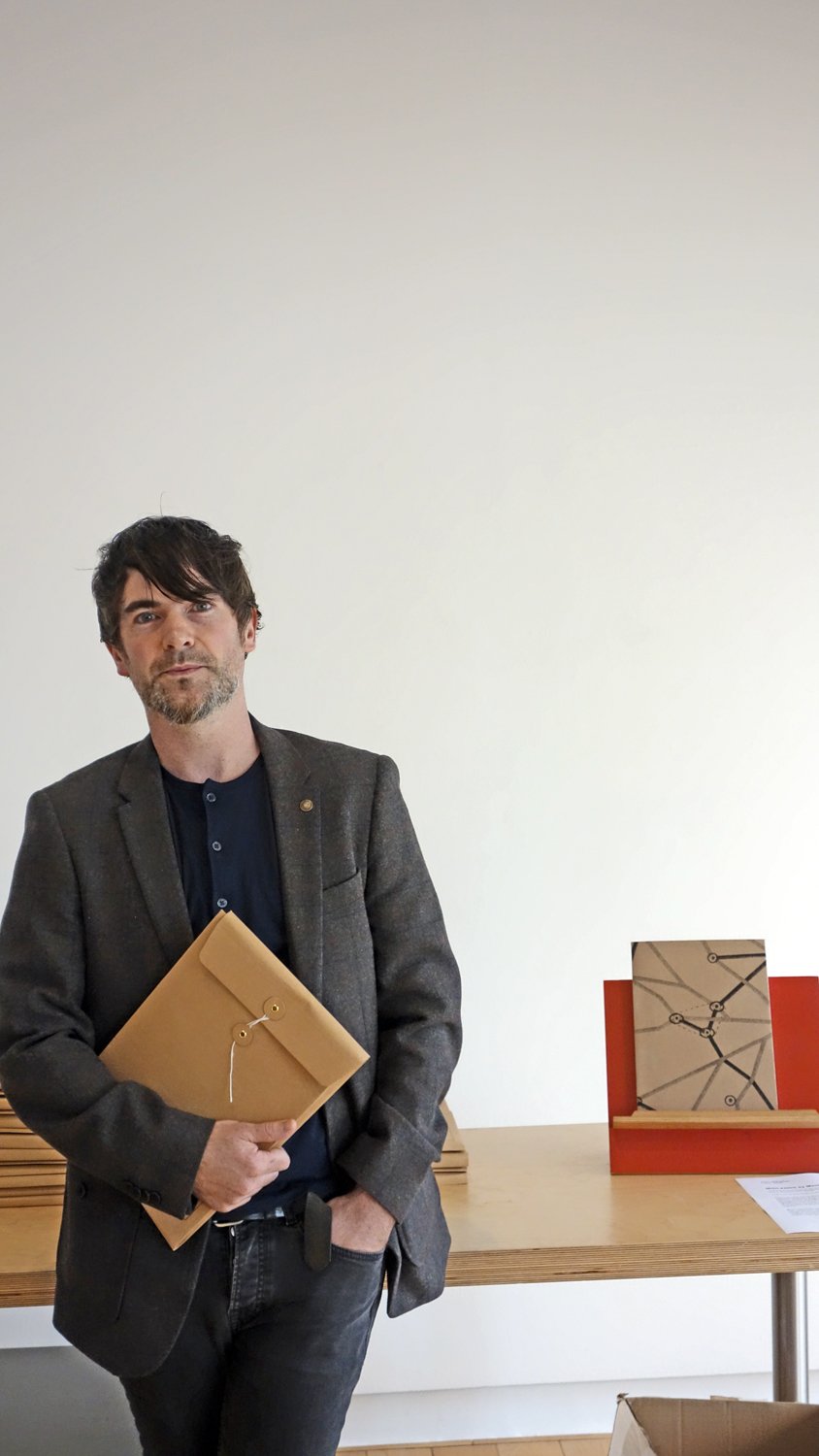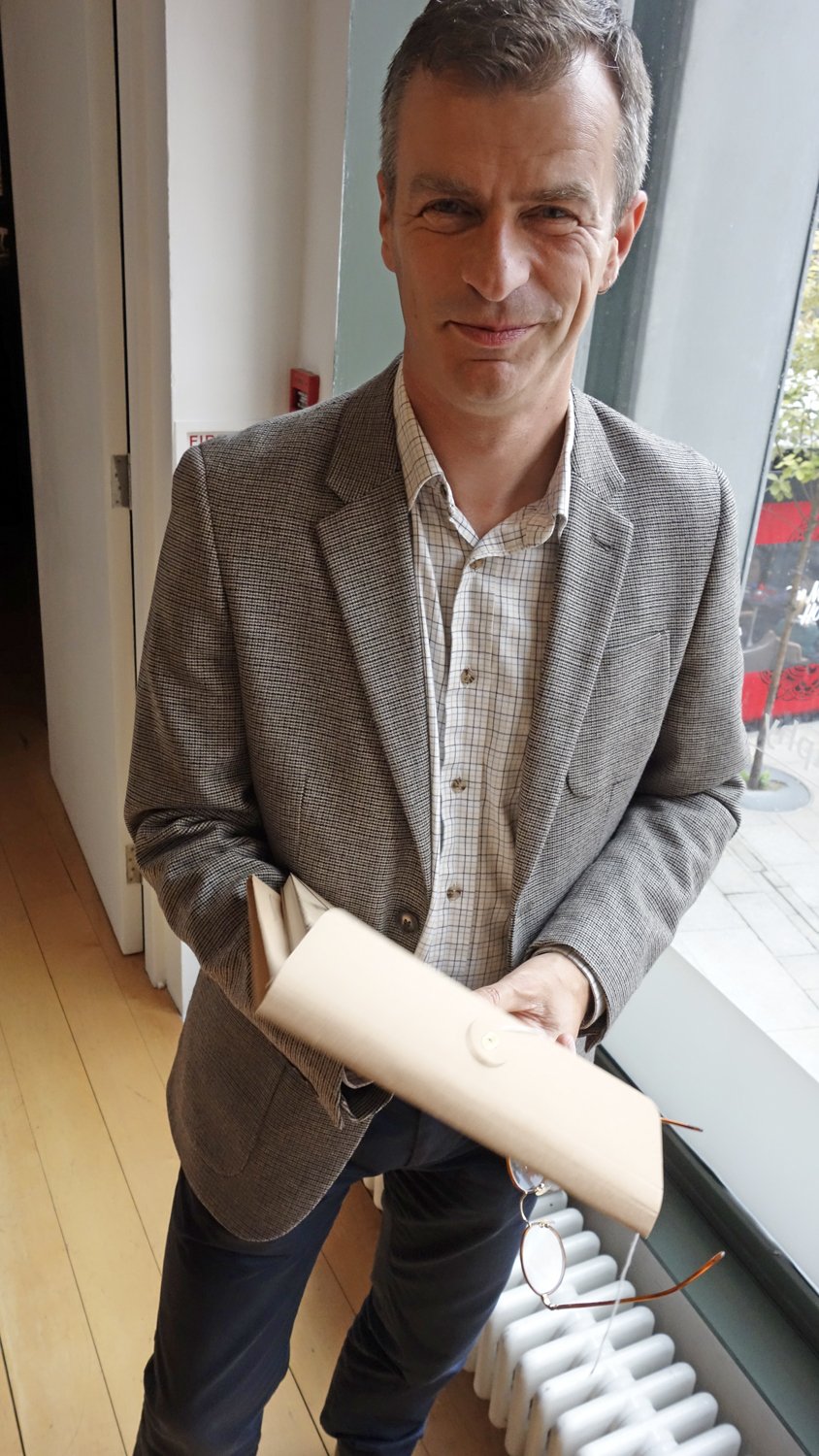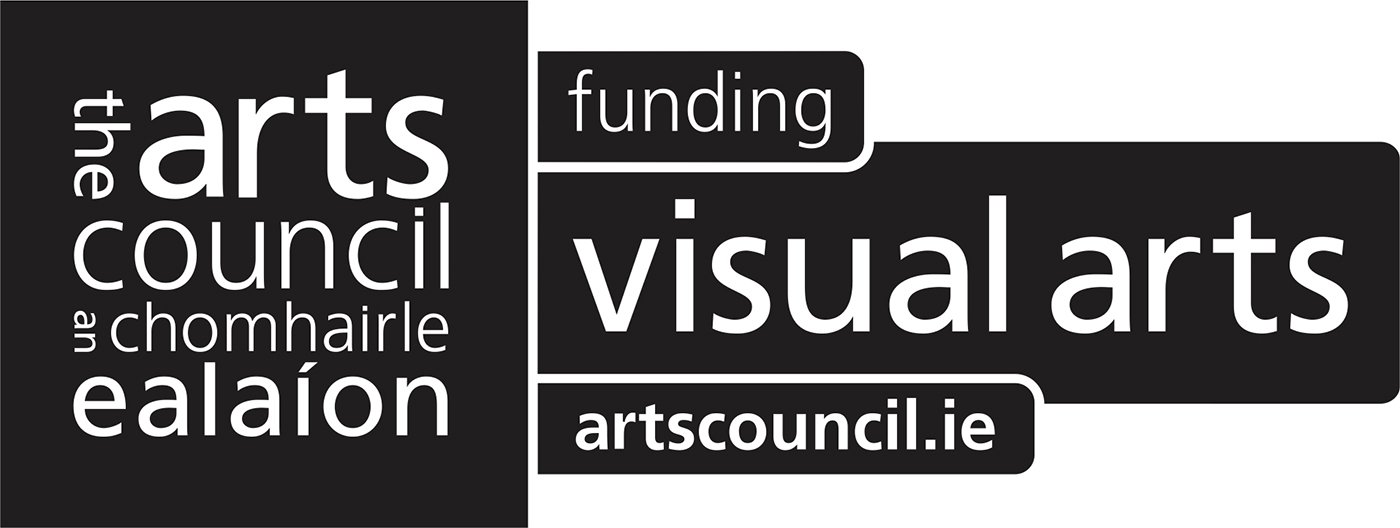Special Events 2015
The Gallery of Photography does more than showcase photography exhibitions here in Dublin. We are also a venue for photographers’ book launches. We have even travelled abroad to collaborate with different galleries and photography exhibitions.
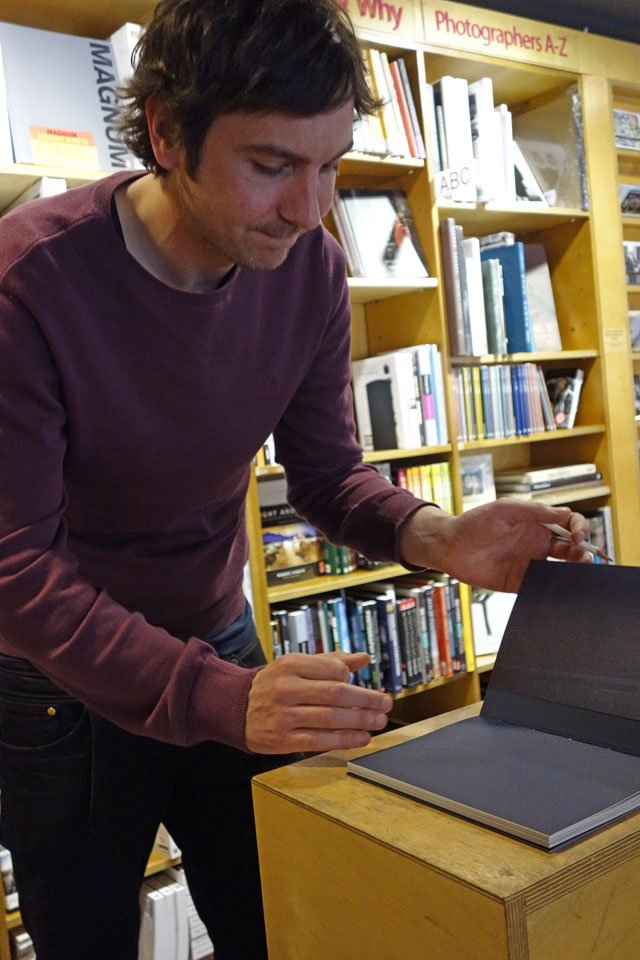
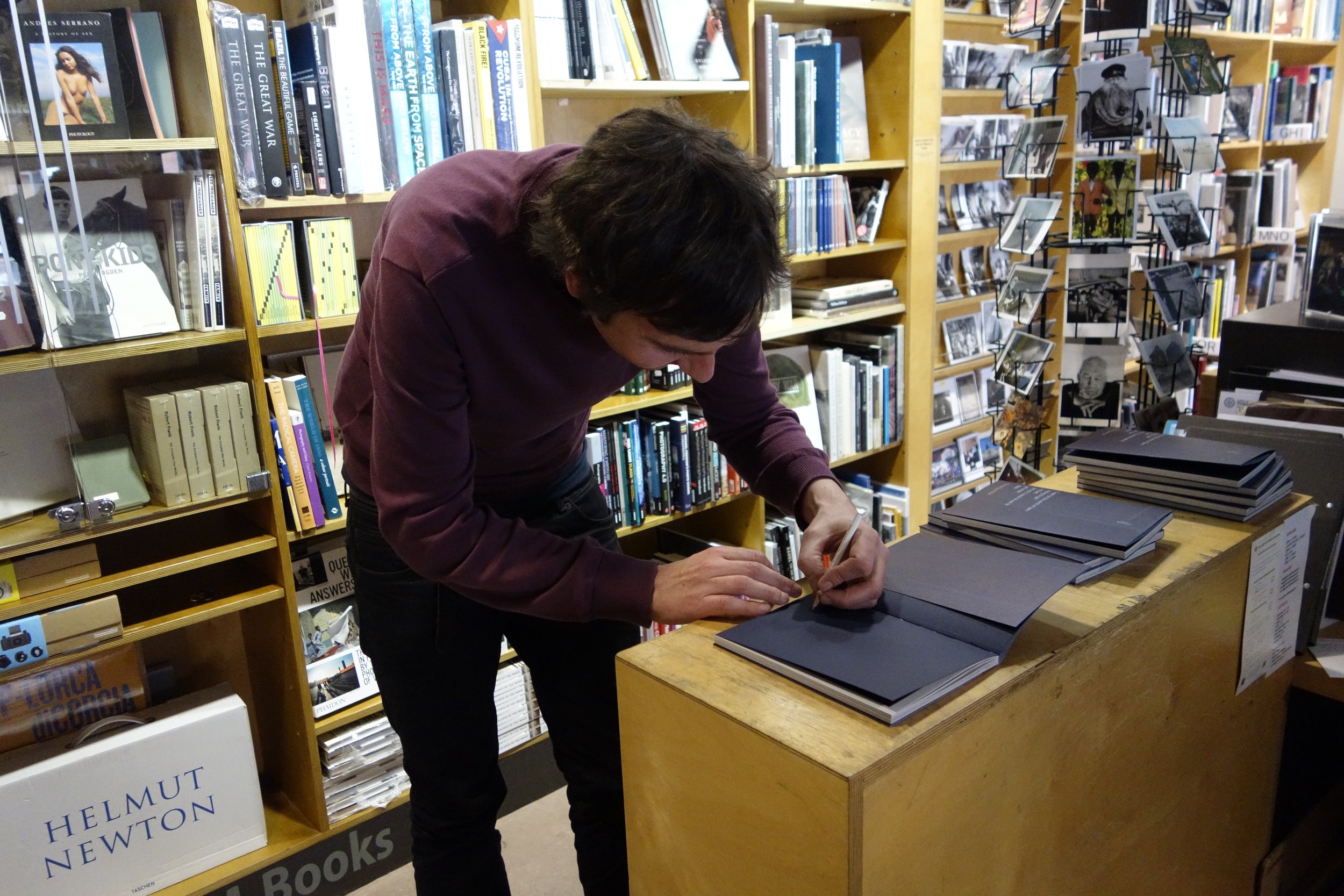
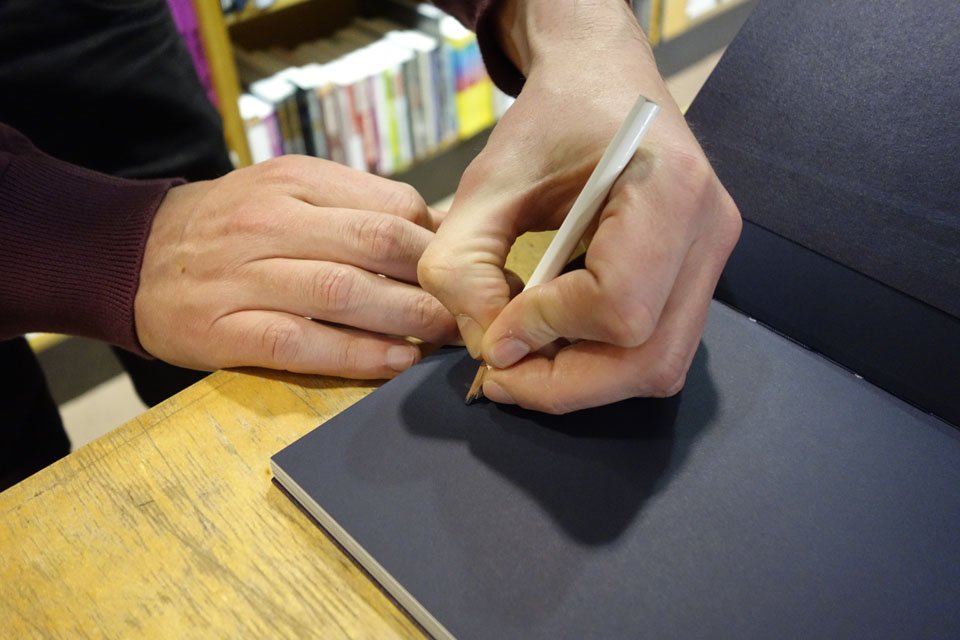
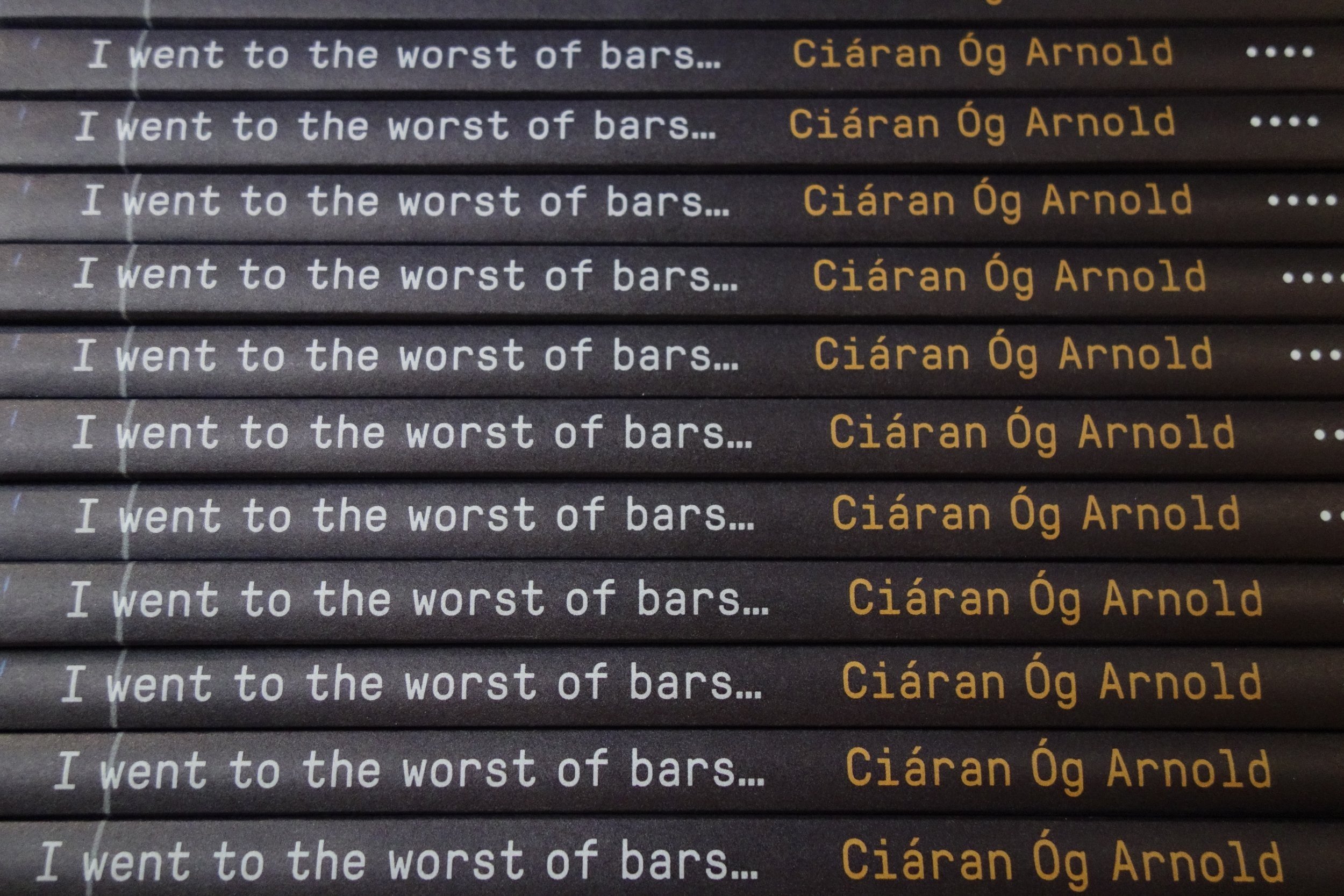
Ciarán Óg Arnold Book Launch: ‘I went to the worst of bars hoping to get killed. but all I could do was to get drunk again’
‘I went to the worst of bars hoping to get killed. but all I could do was to get drunk again’ is a diary of sorts, following invisible men, down piss alleyways and into empty bars. The photographer accompanies the seekers of oblivion, their lopsided faces caught between ecstasy and apathy, their mouths chasing the numbness of inebriation.
This is Ballinasloe, a sandstone town on the River Suck in the easternmost corner of Galway in Ireland, seen through the eyes of a native, Ciarán Óg Arnold. Within the rabble, Arnold trails after the cast-offs, invisible men who spend their time in murky corners, choosing to do nothing but drift and drink. Ballinasloe is a mouth; in Irish, mouth of the ford, mouth of the crowds. “We claim to hate it here”, writes Arnold, “but the truth is that we choose to stay, hiding from reality, drowning in drink and wanting to be left alone as we await whatever fate is in store.”
Over the years, Ballinasloe has become a ghost town, its immobile economy holding back only the indifferent. Its empty clubs are the ordinary voids of an orthodox escapism, the unvarying nightly vocation that is also creeping annihilation. The town is haunted by the absence of those unseeable others, who have also departed – the suicide kids of Charles Bukowski’s poem, from which the book’s title is taken.
Ciarán Óg Arnold Winner of the First Book Award 2015
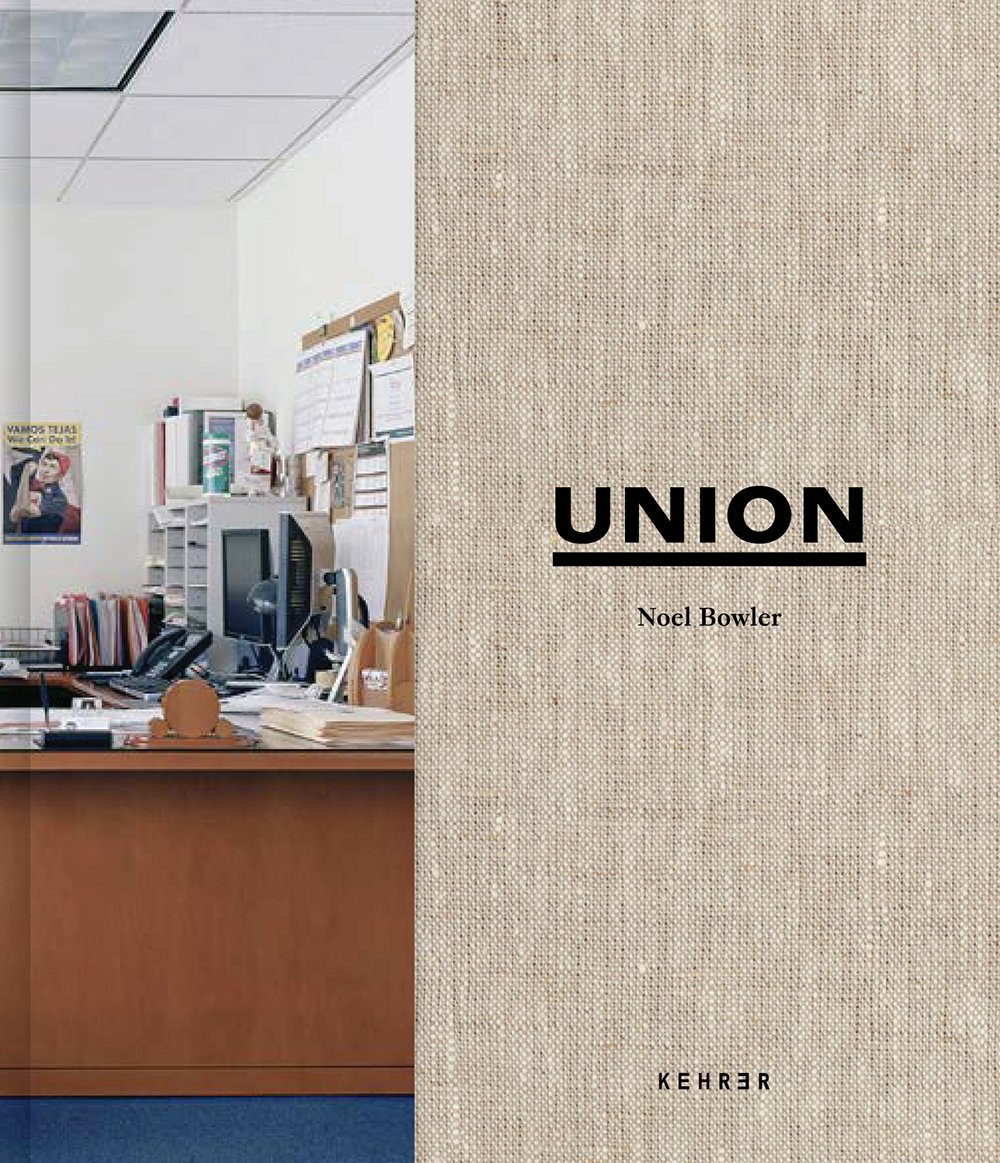
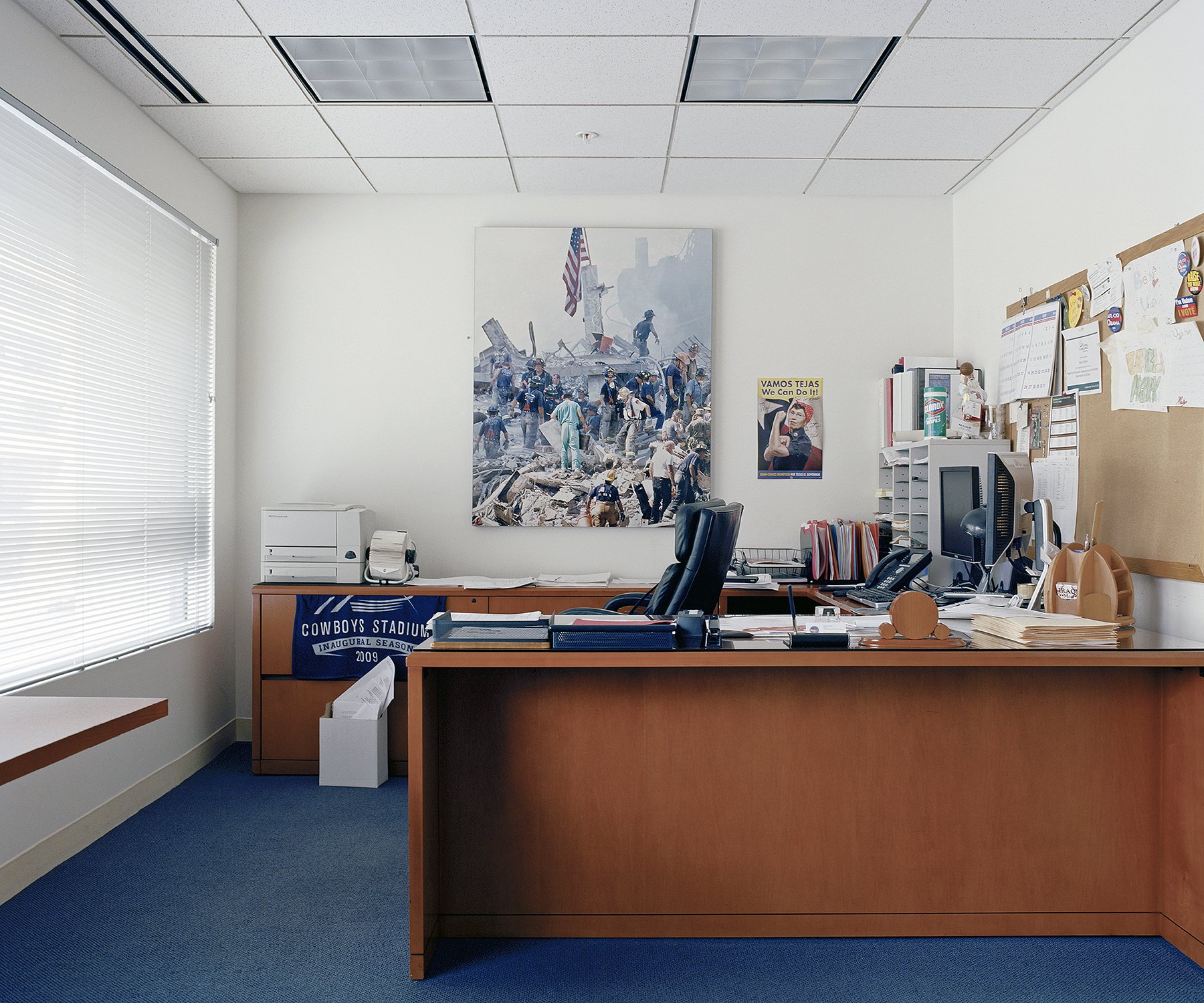
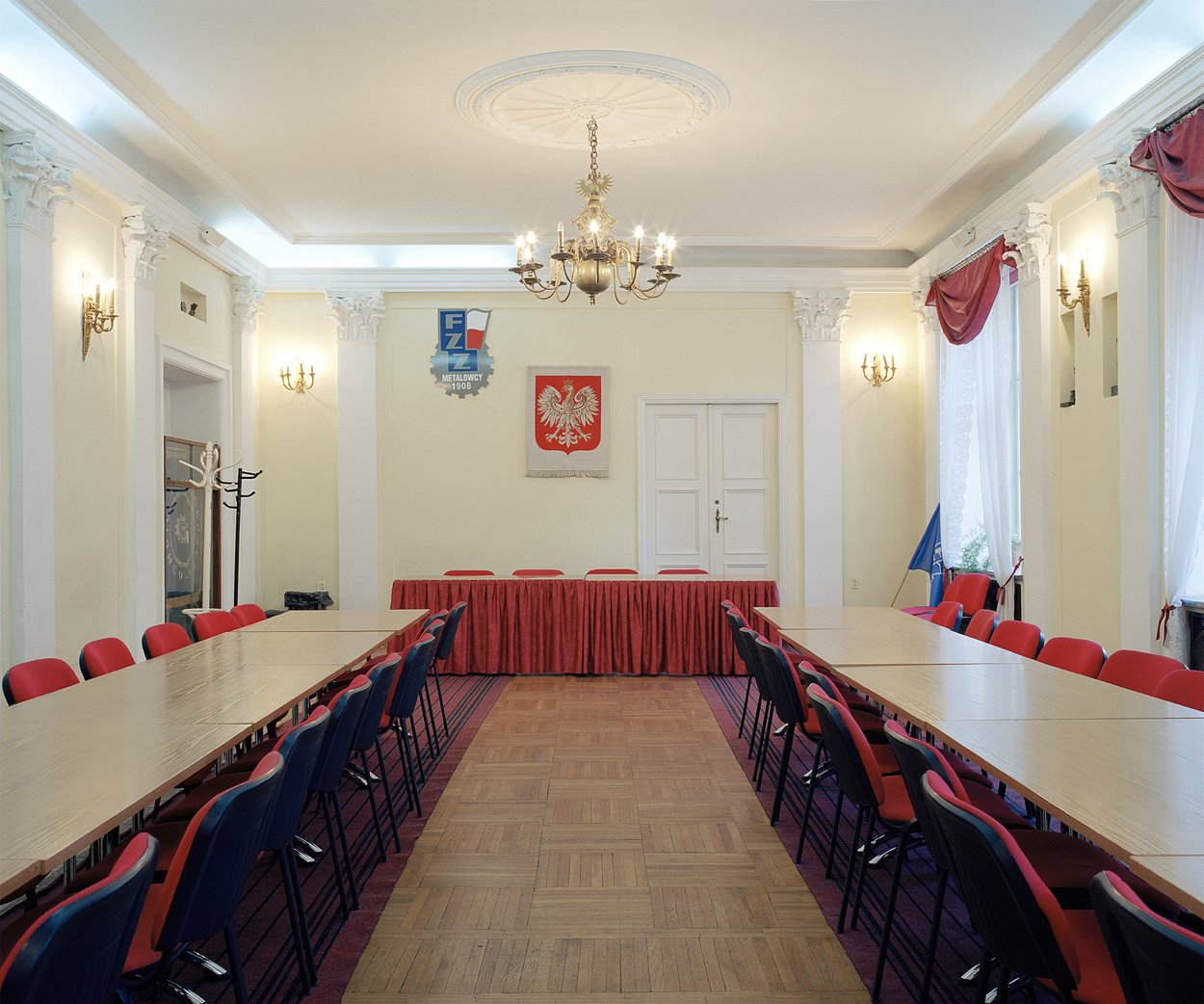
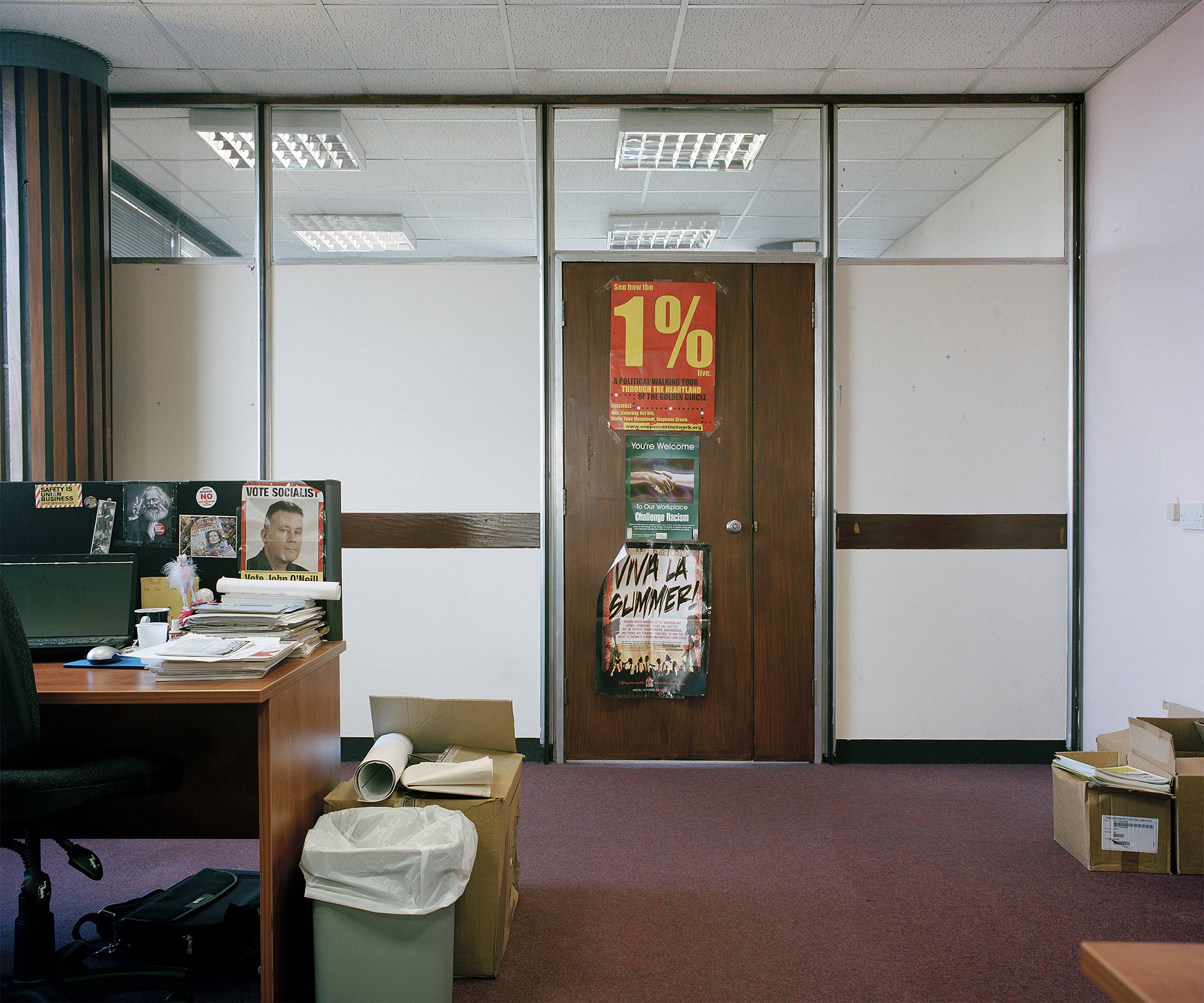
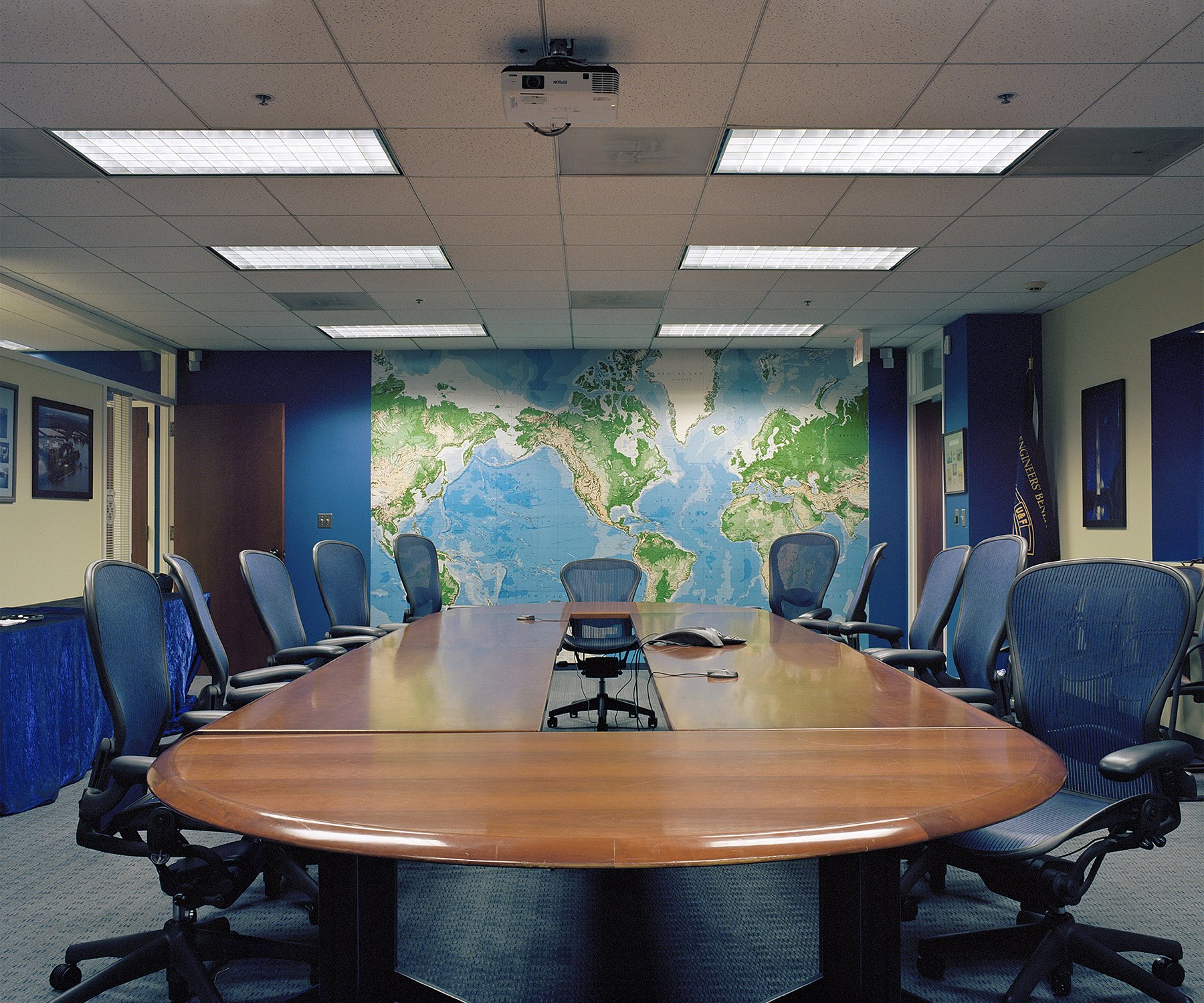
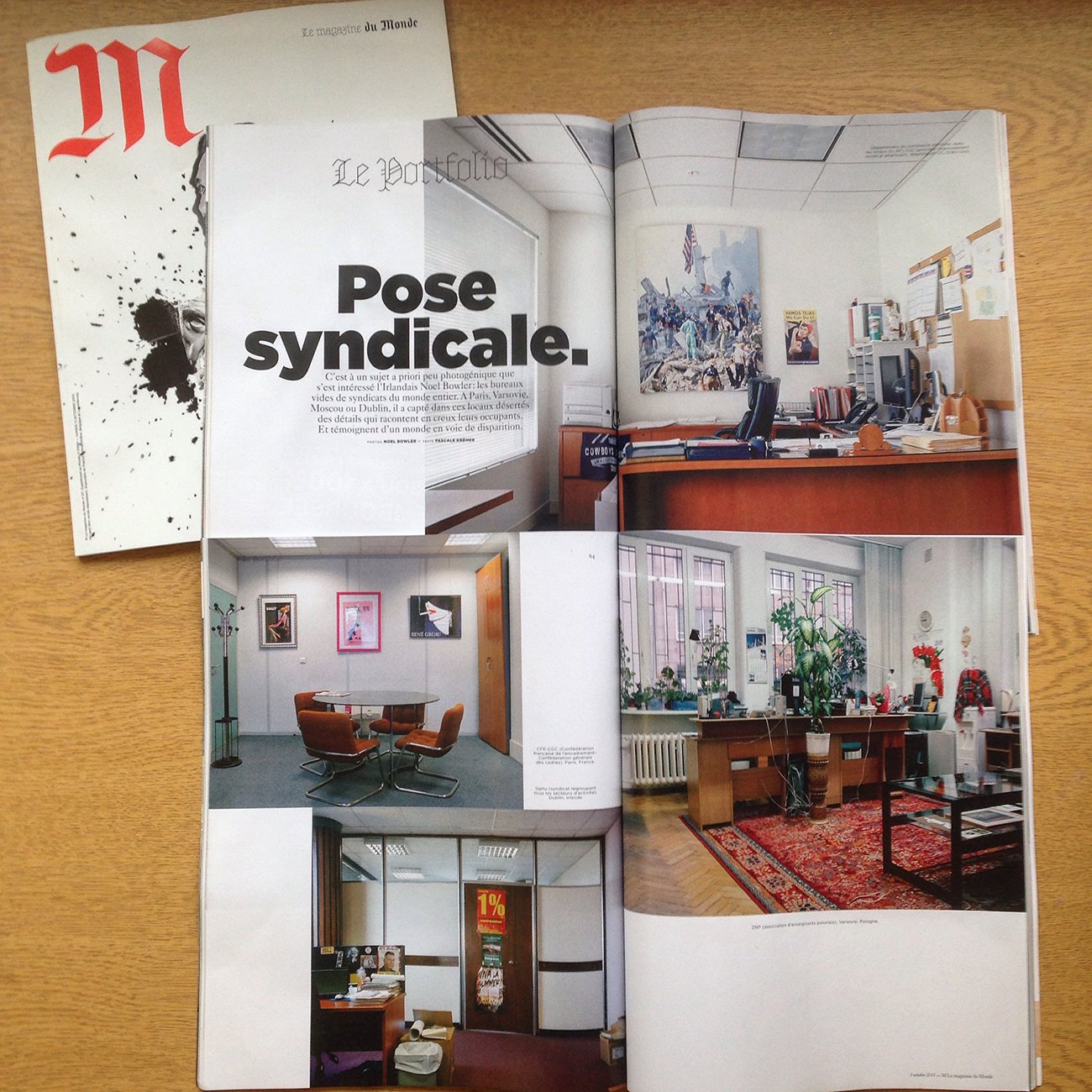
Noel Bowler Book Launch ‘Union’
Made over a four year period defined by economic uncertainty, increased worker insecurity and the decline of traditional work practices, Union responds to how the institutions of organised labour, designed to protect workers from exploitation in the nineteenth century, have responded to the crisis of today. Bowler’s photographs document the interior spaces of trade union offices in fourteen different countries, all with distinct cultural and historical differences and provide a glimpse into the normally unseen spaces where the decisions and policies are created that affect so many. Combining photographs of these interior spaces with portraits of union leaders, Union is a journey through an anxious world where the apparent certainty of the past faces an unknown future.
Noel Bowler is a Photographer and Educator. Born in Ireland (b.1978). He holds an MFA in photography from University of Ulster, Belfast and a BA (Hons) degree in Documentary Photography from the University of Wales, Newport. His work has been exhibited worldwide including New York Photofestivel and Les Recontres d’Arles, with recent solo exhibitions in Gallery of Photography, Ireland and Impressions Gallery, England. Bowler has nominated for the Deutsche Borse Photography Prize in 2011 and for the Prix Pictet Photography Prize in both 2012 and 2015. He is currently a Lecturer in Photography at University Campus Suffolk.
Union has been nominated for the sixth edition of the Prix Pictet Prize.
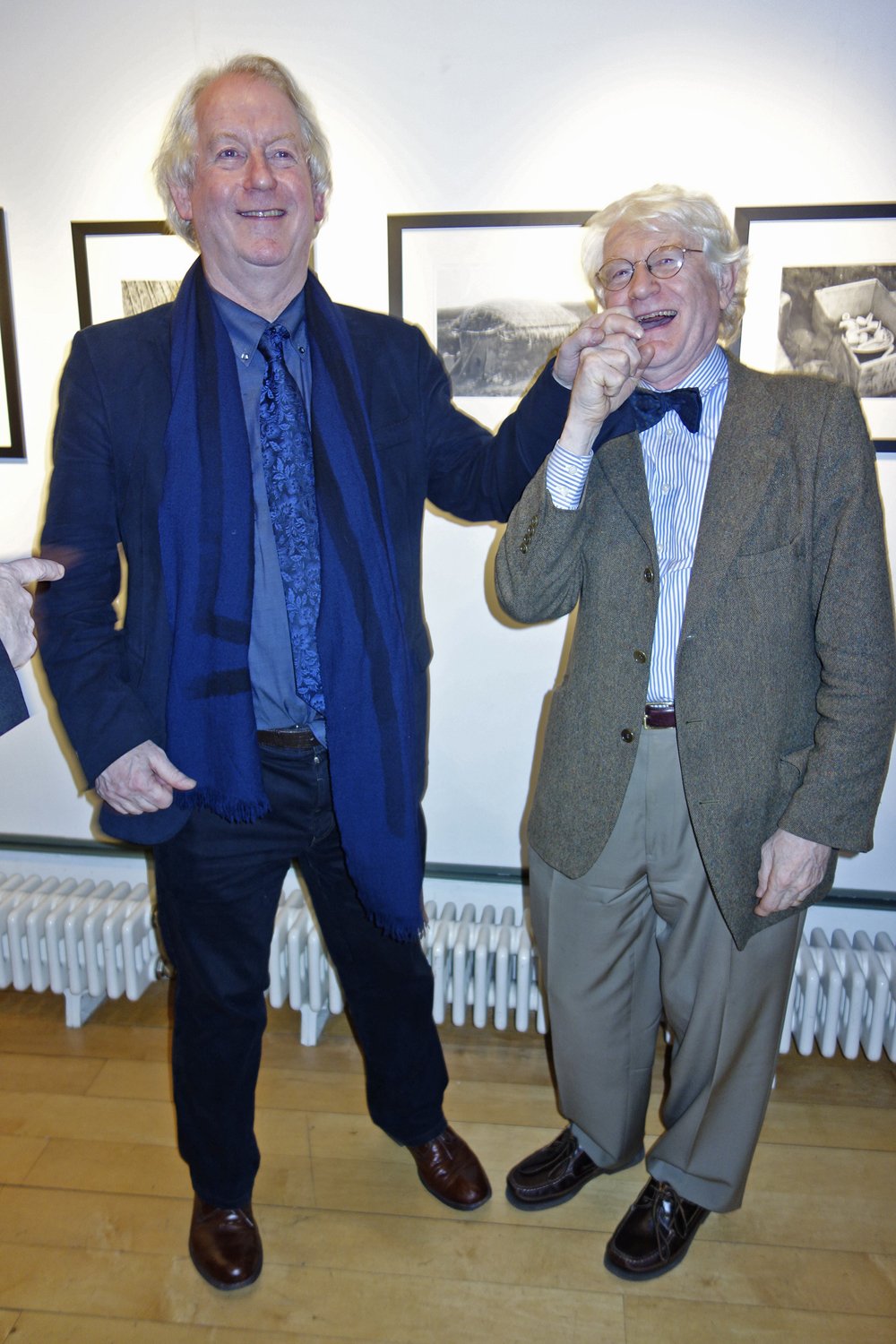
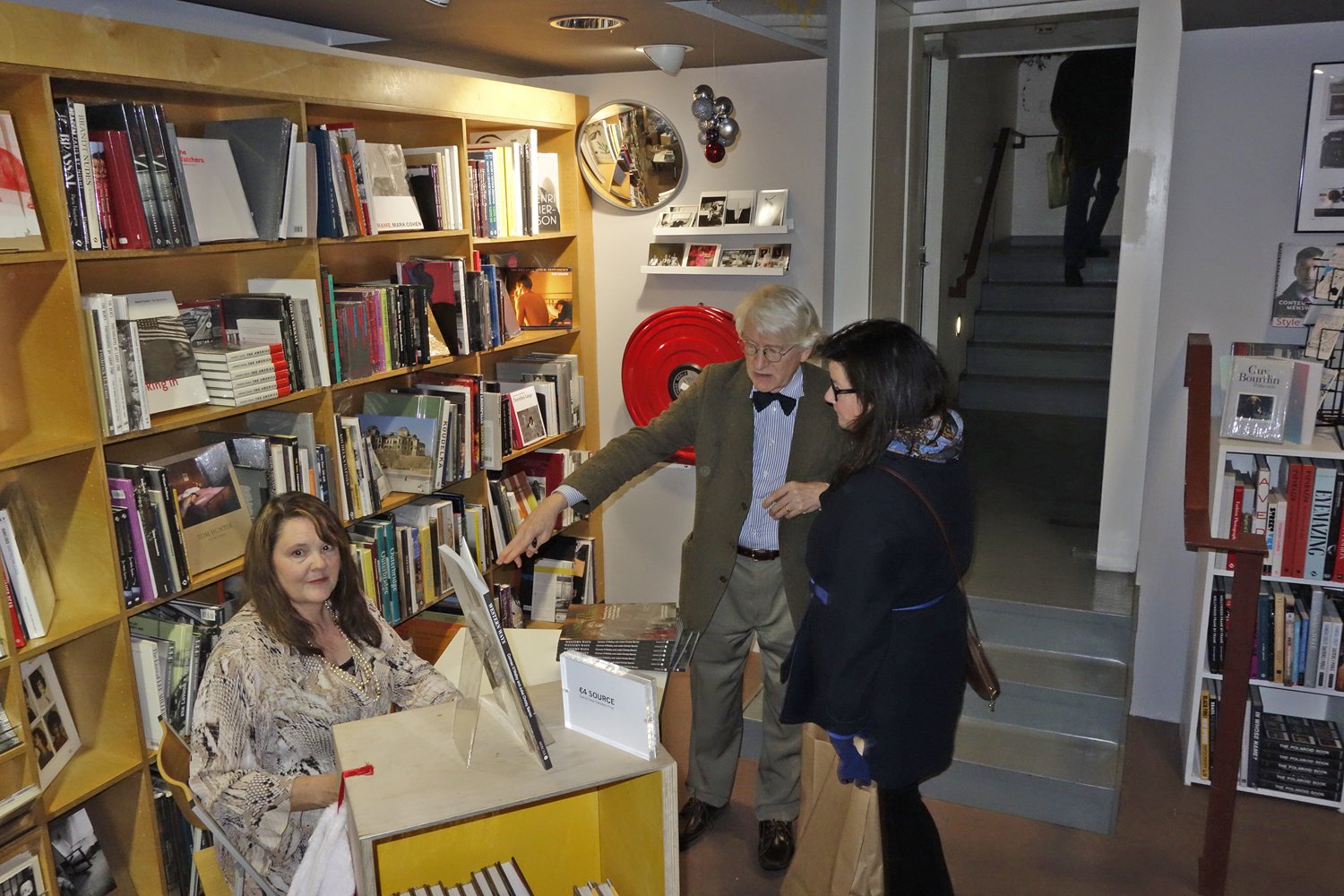
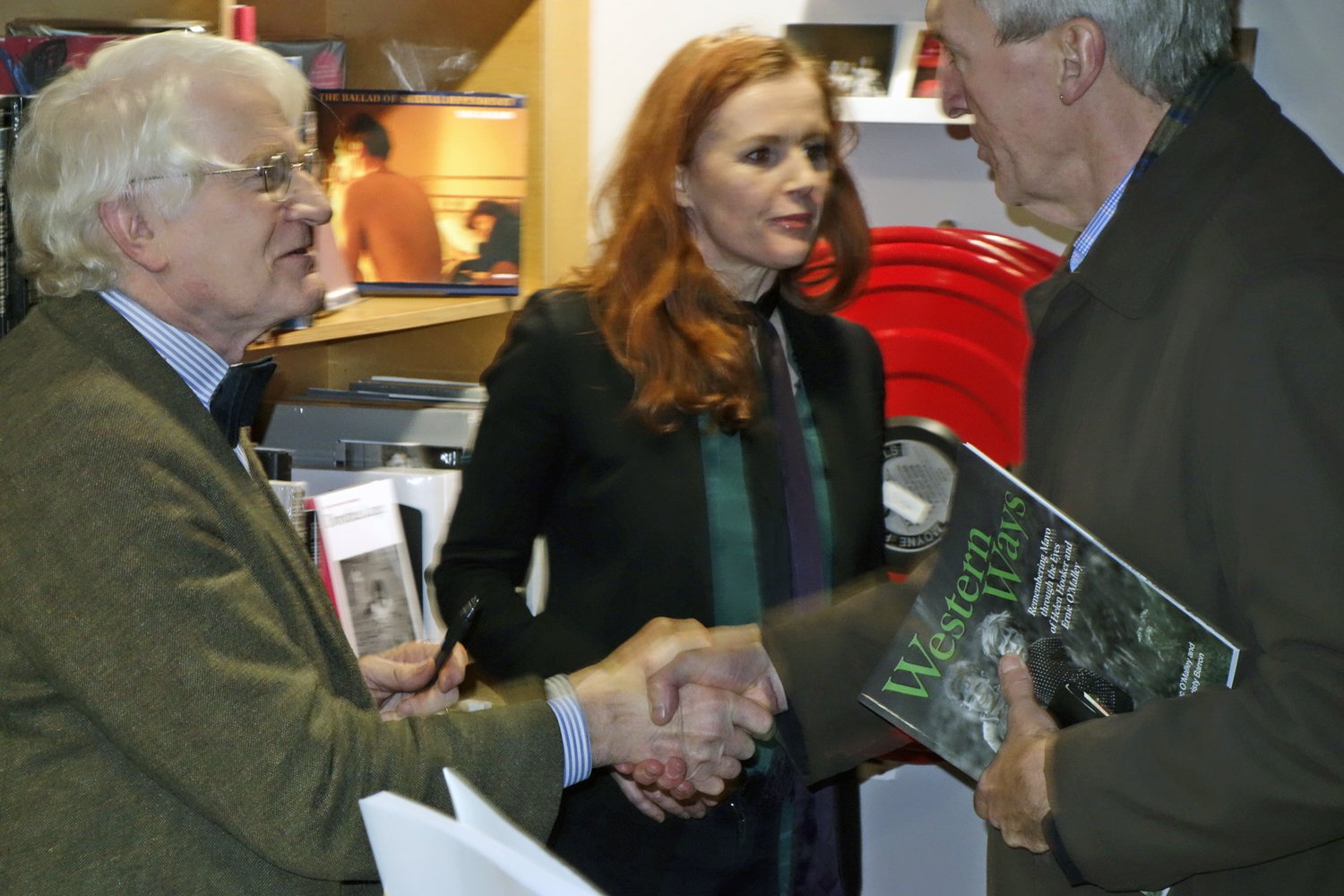
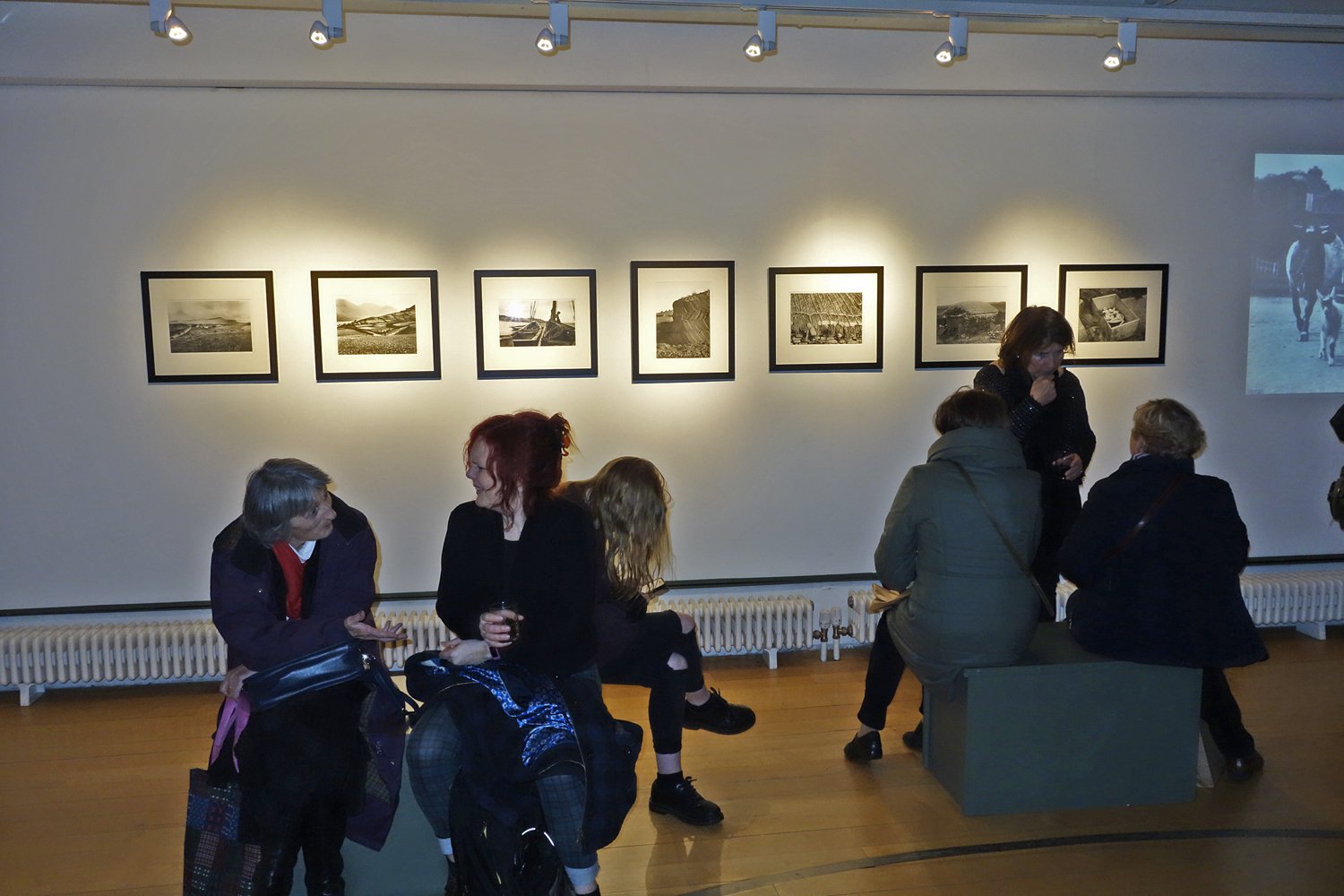
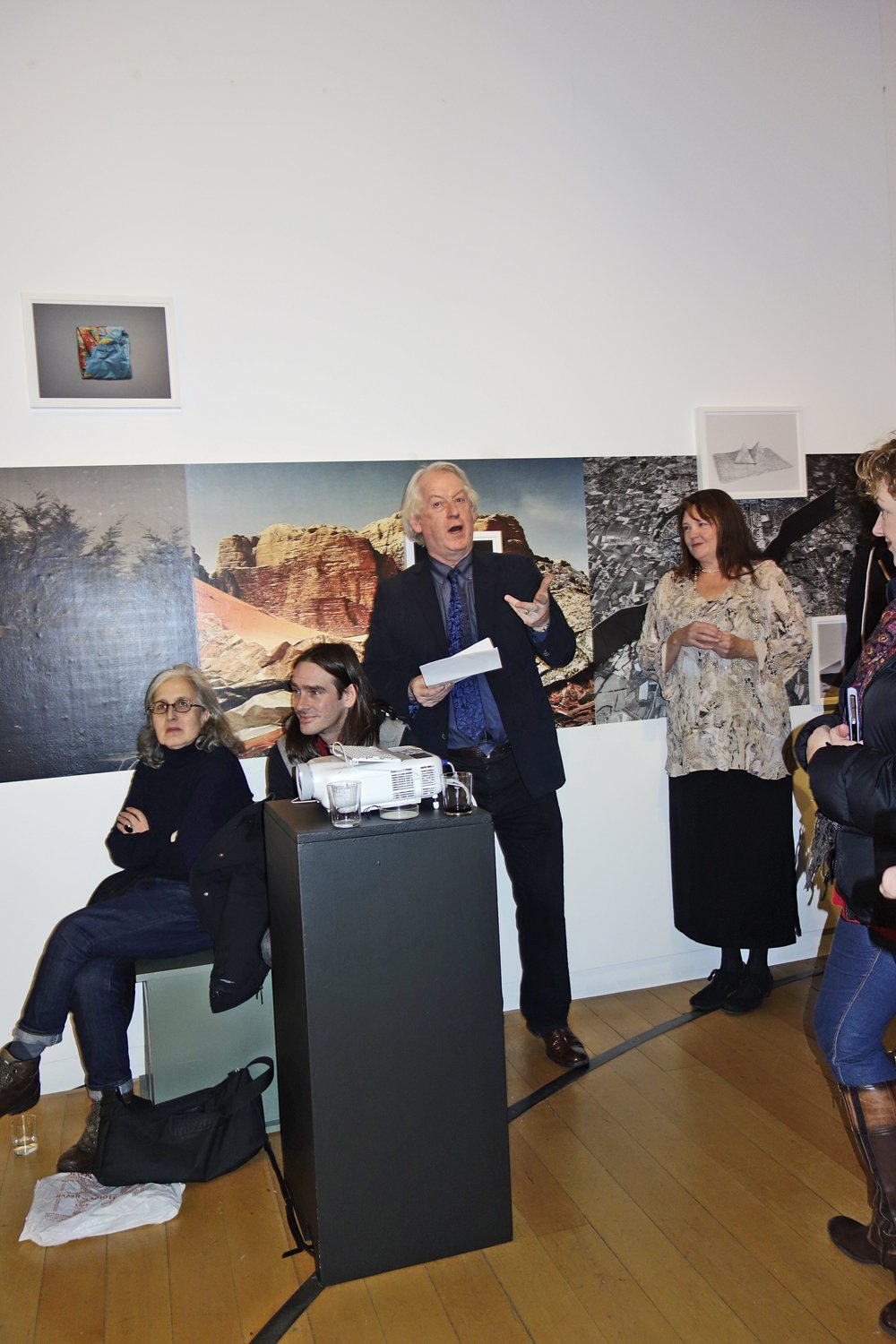
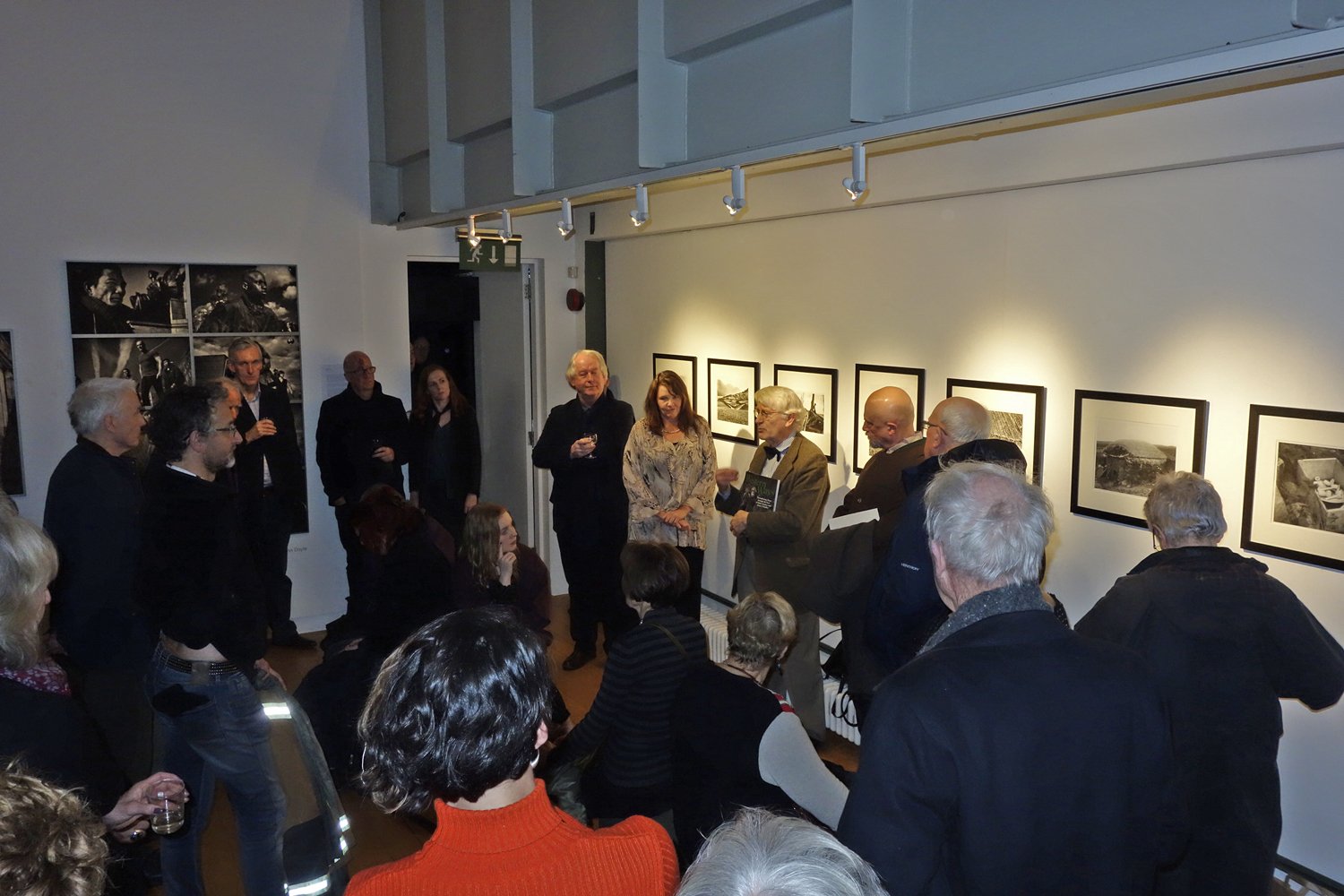
Book Launch: ‘Western Ways: Remembering Mayo Through the Eyes of Helen Hooker and Ernie O'Malley’ by Cormac O'Malley & Juliet Christy Barron
Officially launched in Gallery of Photography by Luke Gibbons, Professor of Irish Literary and Cultural Studies, NUI Maynooth. 'Western Ways Remembering Mayo through the Eyes of Helen Hooker and Ernie O'Malley'
In 1938 Castlebar-born Irish Republican Ernie O’Malley (1897-1957) returned to Mayo, his childhood home, with his American wife, artist Helen Hooker (1905-1993), to give their children a rural life close to the sea and land. They made their home at Burrishoole Lodge, near Newport on the northern shore of Clew Bay and began to farm their land as well as examine closely life in rural Ireland. Helen, a keen photographer, compiled an extensive collection of photographs of local and island people in Mayo, capturing their way of life and the environment that surrounded them.
Over the next half-century, the Mayo photographs were absorbed into a wider collection of almost 20,000 photographs taken through Helen's life. Since her death in 1993 practically nothing has been done with the collection except to have several small exhibits of her existing prints. Ernie and Helen's youngest son, Cormac O'Malley, recently rediscovered the collection and its Mayo negatives with a fresh perspective and new information - that his father had his own camera and actively participated in many of the early images. Most of these negatives have never been printed, and, until how the public has never seen any of Ernie's own photographs.
In the newly published Western Ways this unique visual record has been drawn together, along with excerpts from Ernie’s writings on Mayo and an extensively research explanatory text to provide a fascinating picture of the people of Mayo, their daily existence and the rugged but beautiful landscape and seascape that shaped their lives. These images reveal the rural life of Ireland as it existed in the late 1930s – early 1940s.
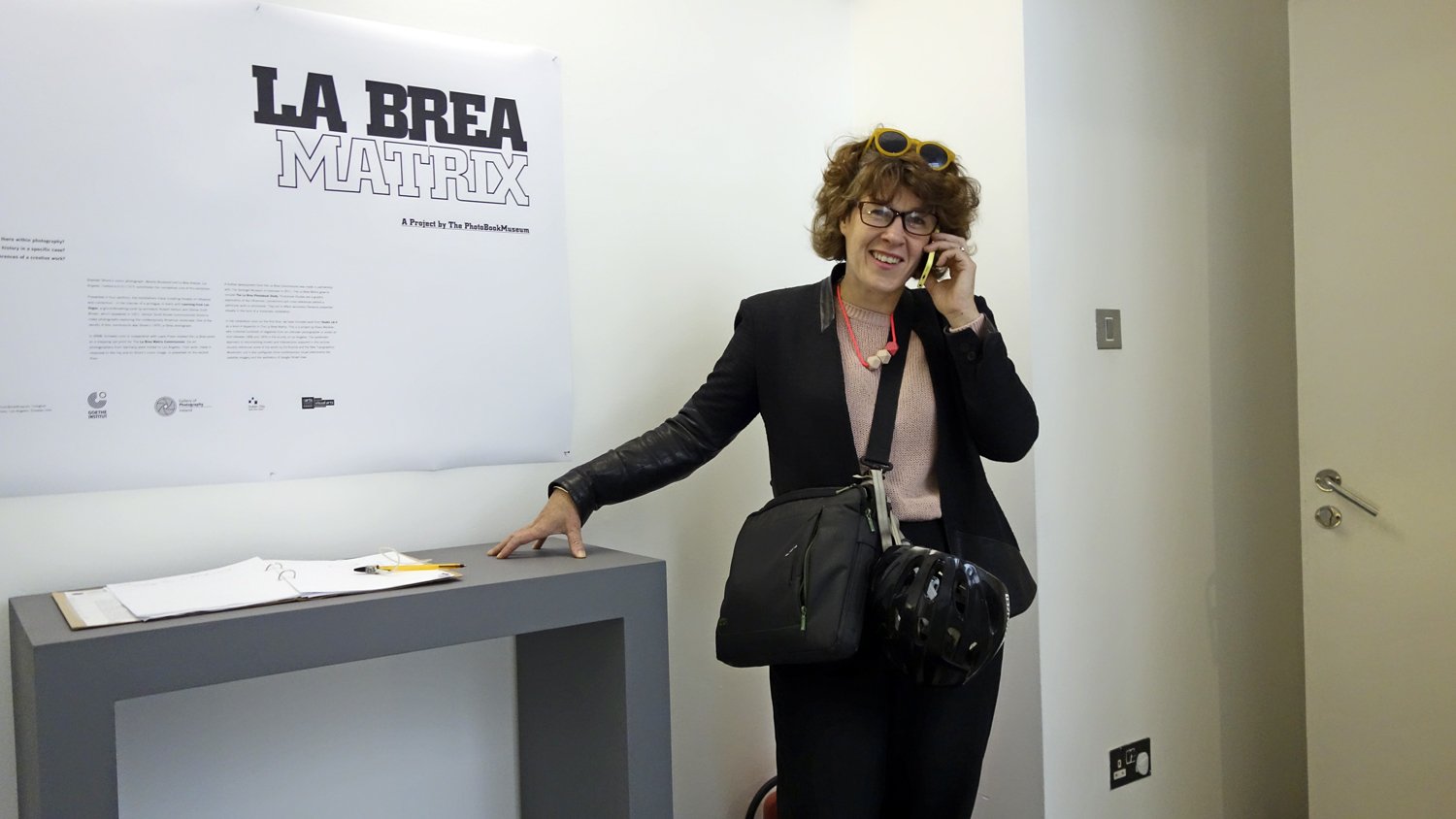
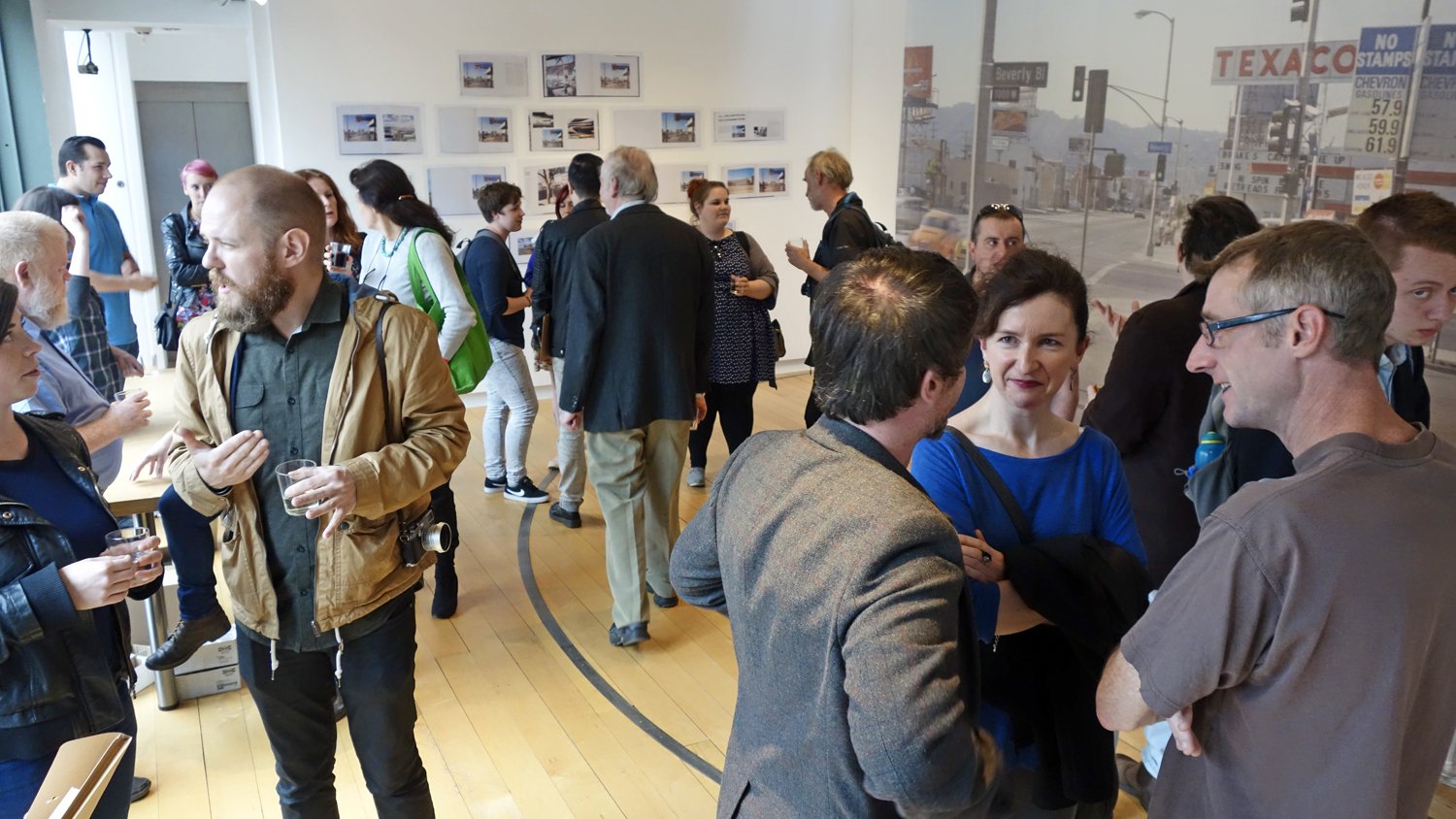

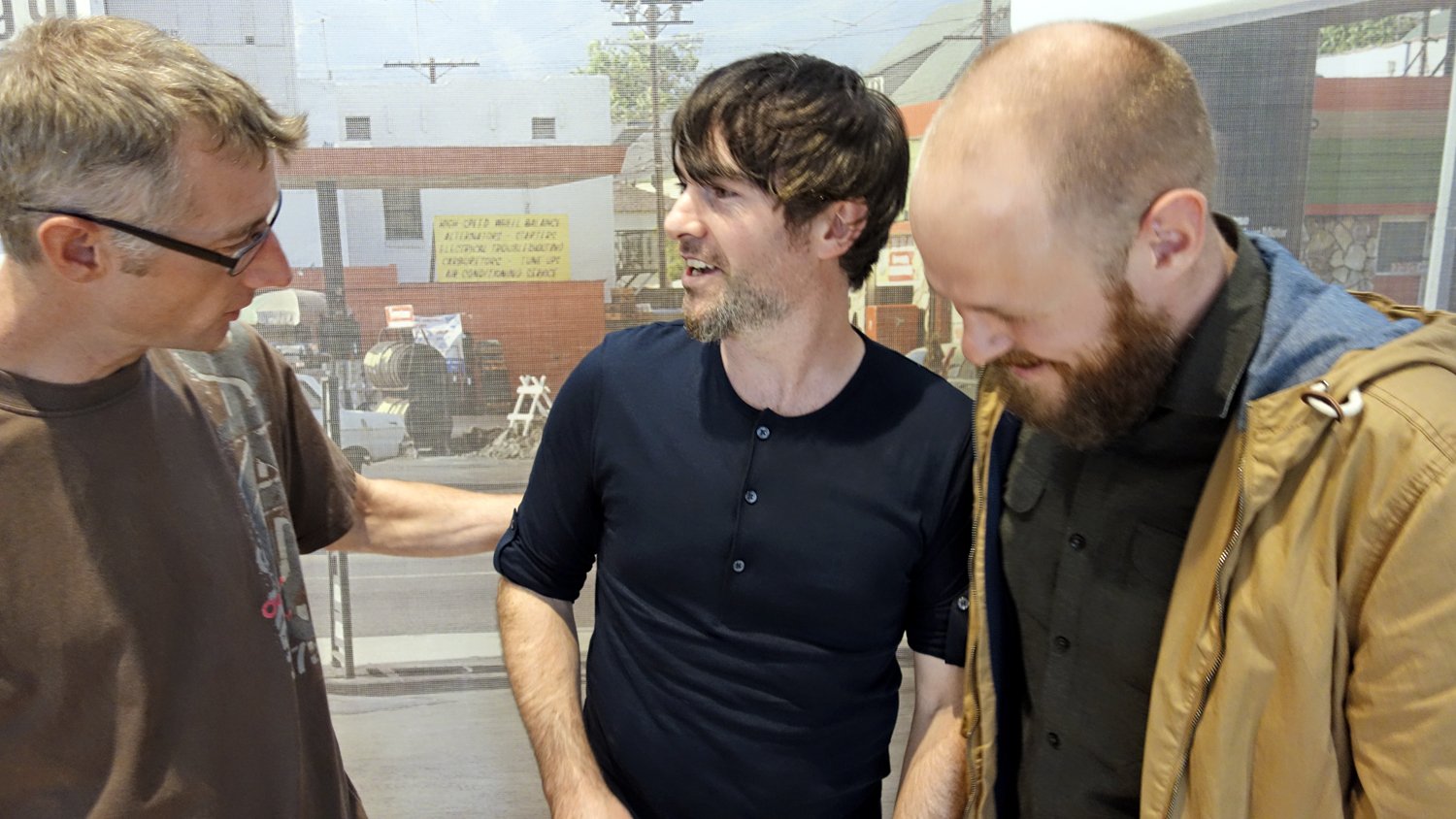
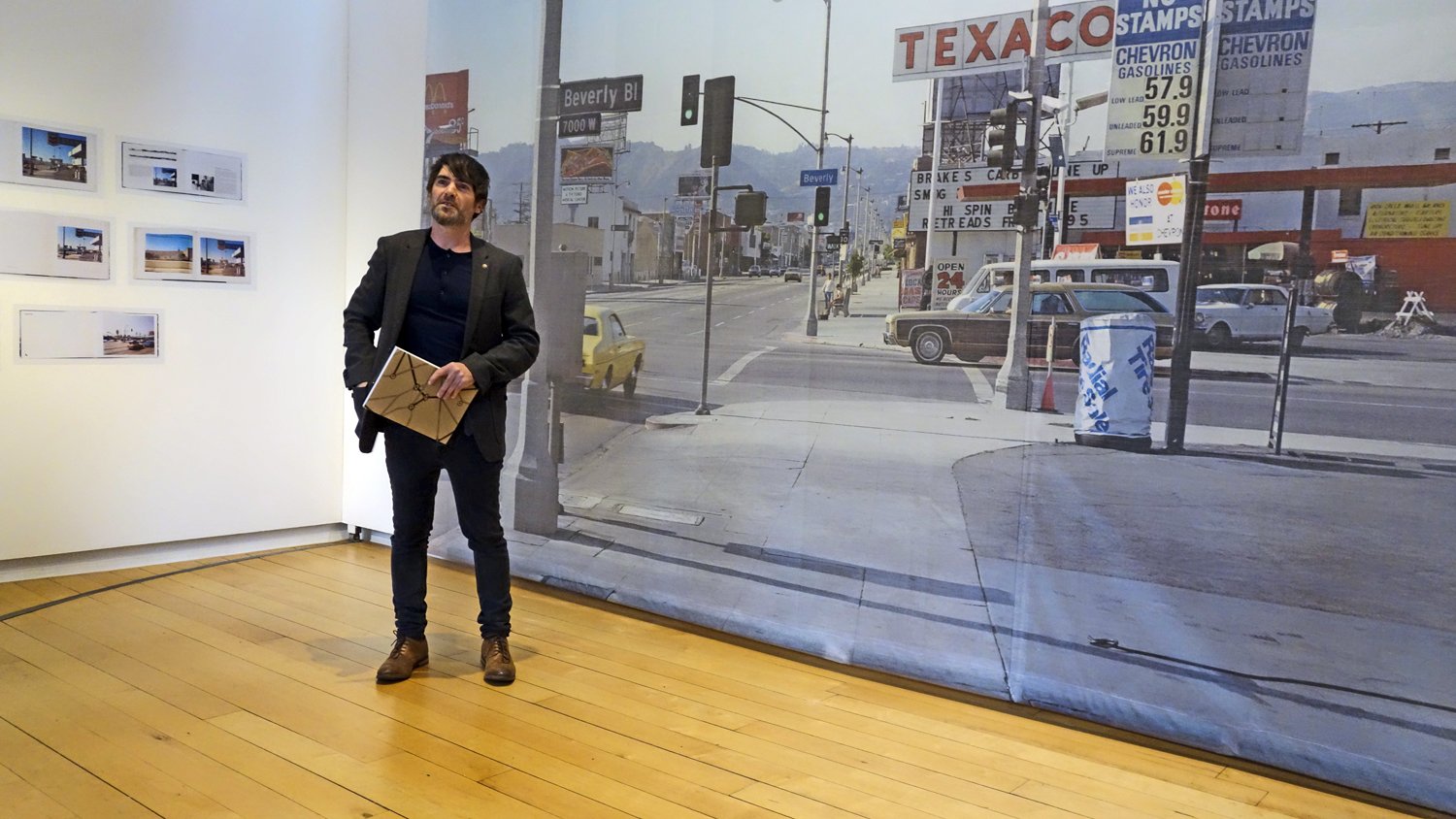
Martin Cregg Book Launch ‘Midlands’
Over a ten year period Martin Cregg's ‘Midlands’ has explored the physical transitions which are as a direct consequence of the National Spatial Strategy for Ireland (2002-2020). The disputed territory of 'The Midlands' was allocated a number of major strategic infrastructural projects - an inter-triangulation of “gateways” and “Hubs” in the interior were designed to kick-start an economic revival and encourage a dynamic regeneration and re-population of what was seen as a potential core area of the country.
While ‘Midlands’ represents topographic alterations which were both subtle and monumental, minute and large scale over this period of time, the work also represents the porous nature of the imagined borders of the region itself, questioning the very concept of what the ‘Midlands’ is - an undetermined geographical entity, under constant construction and re-definition.
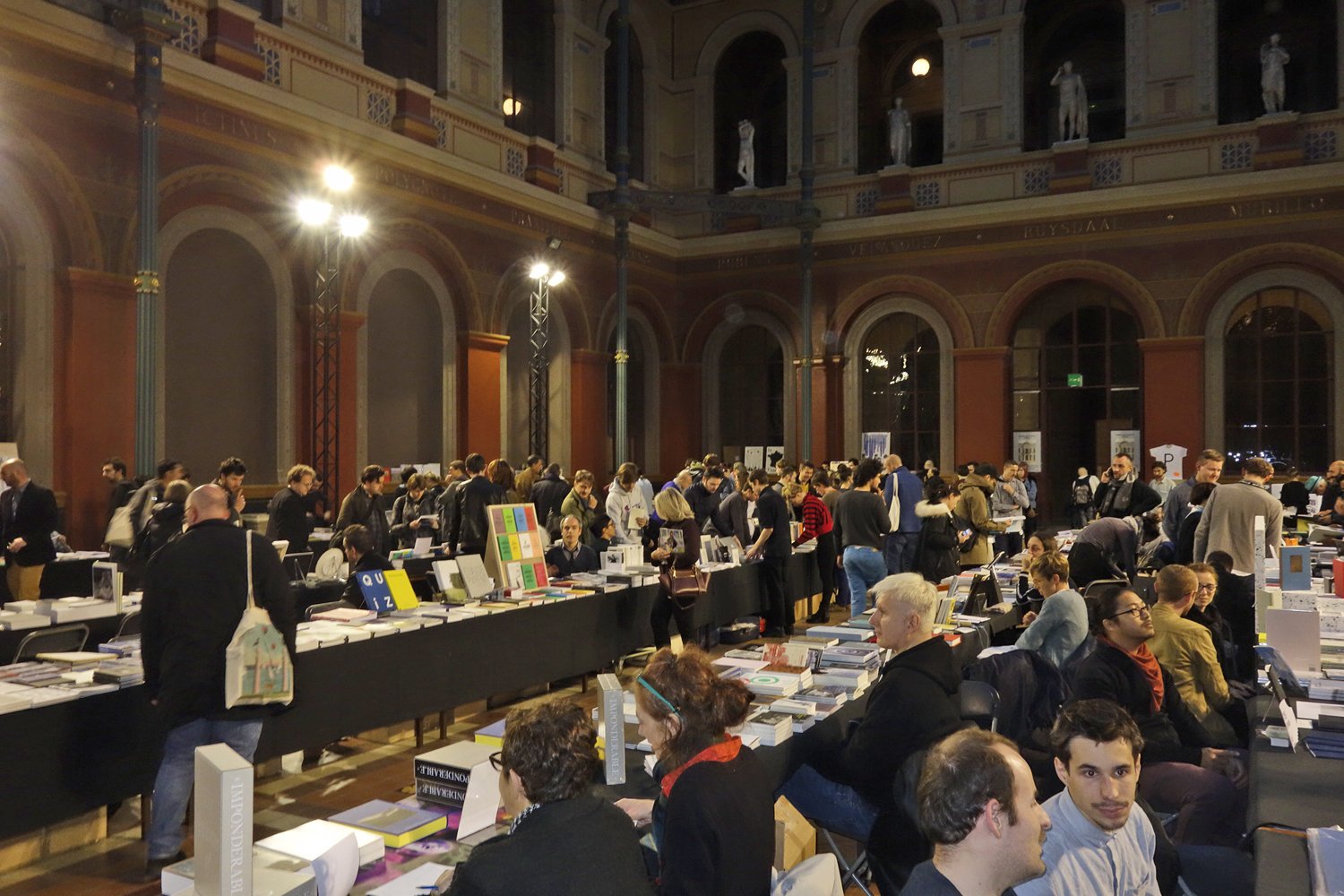
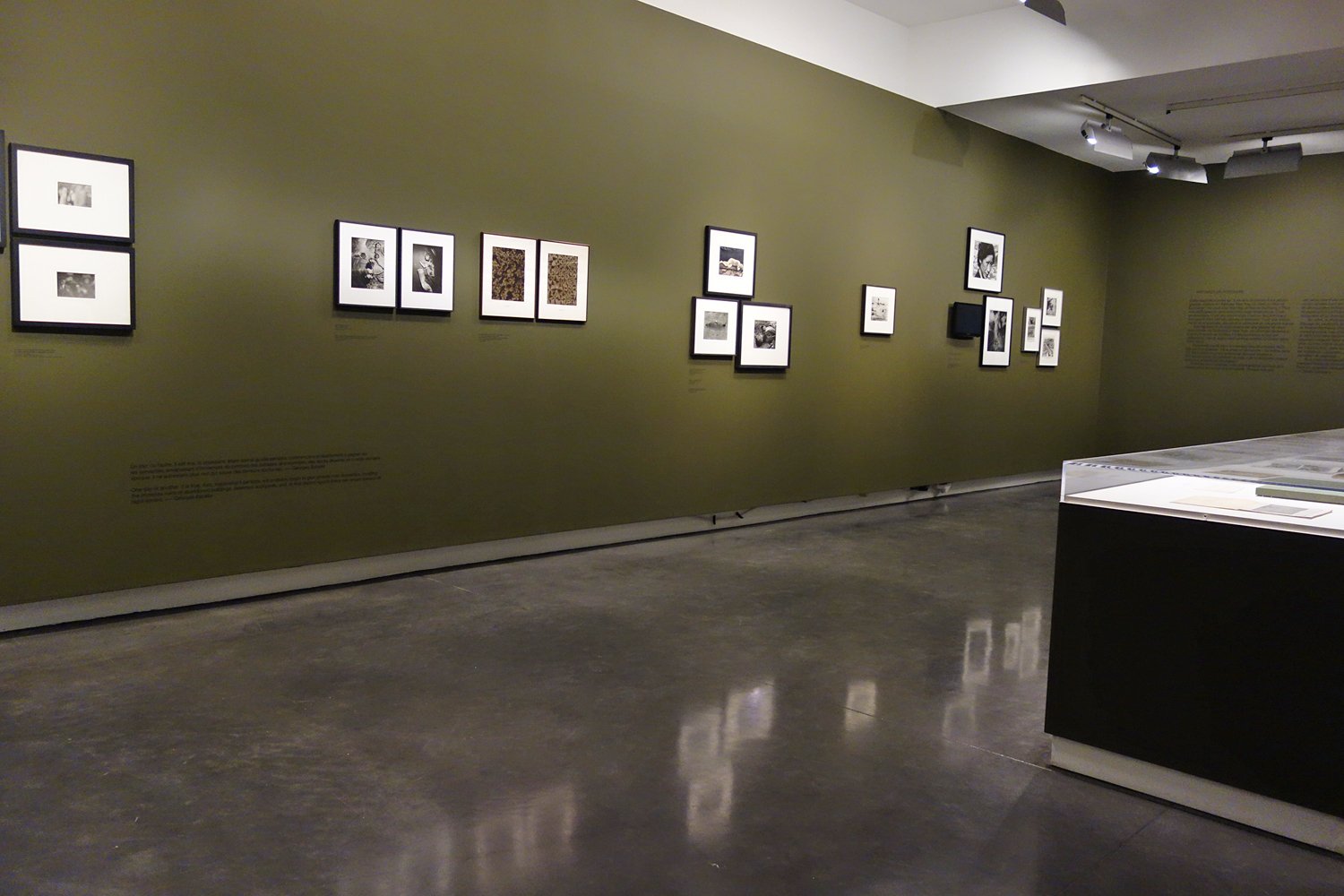
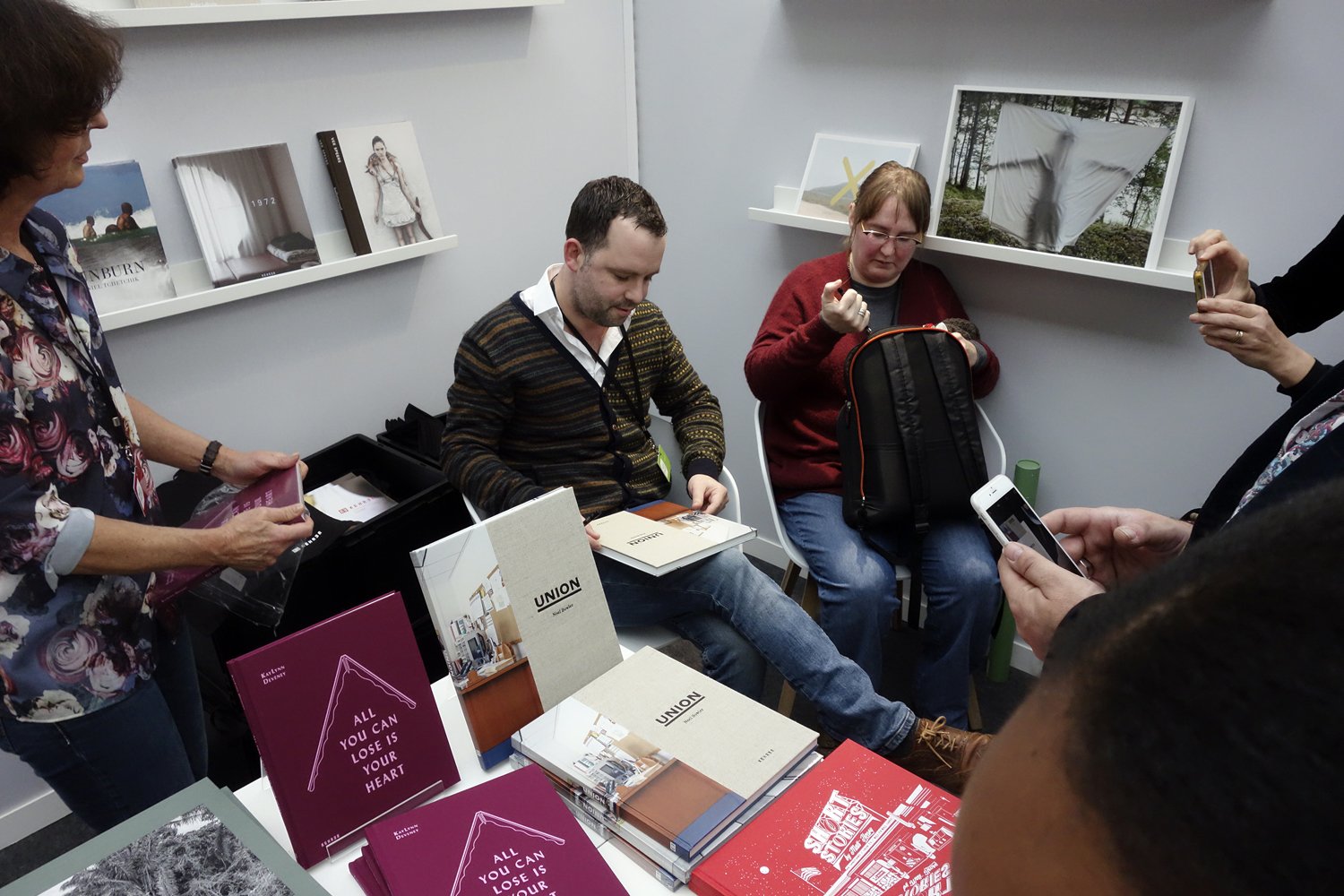
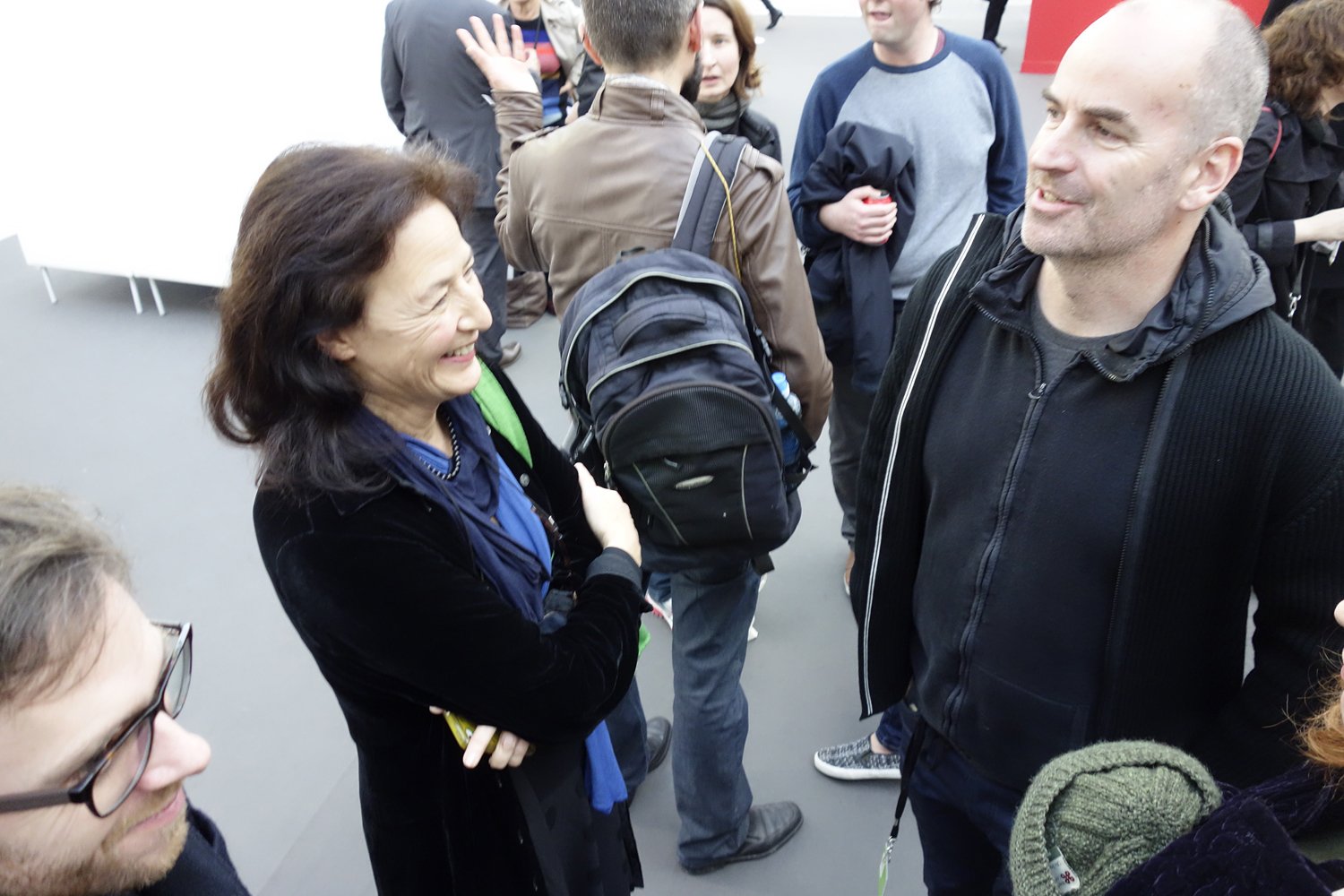

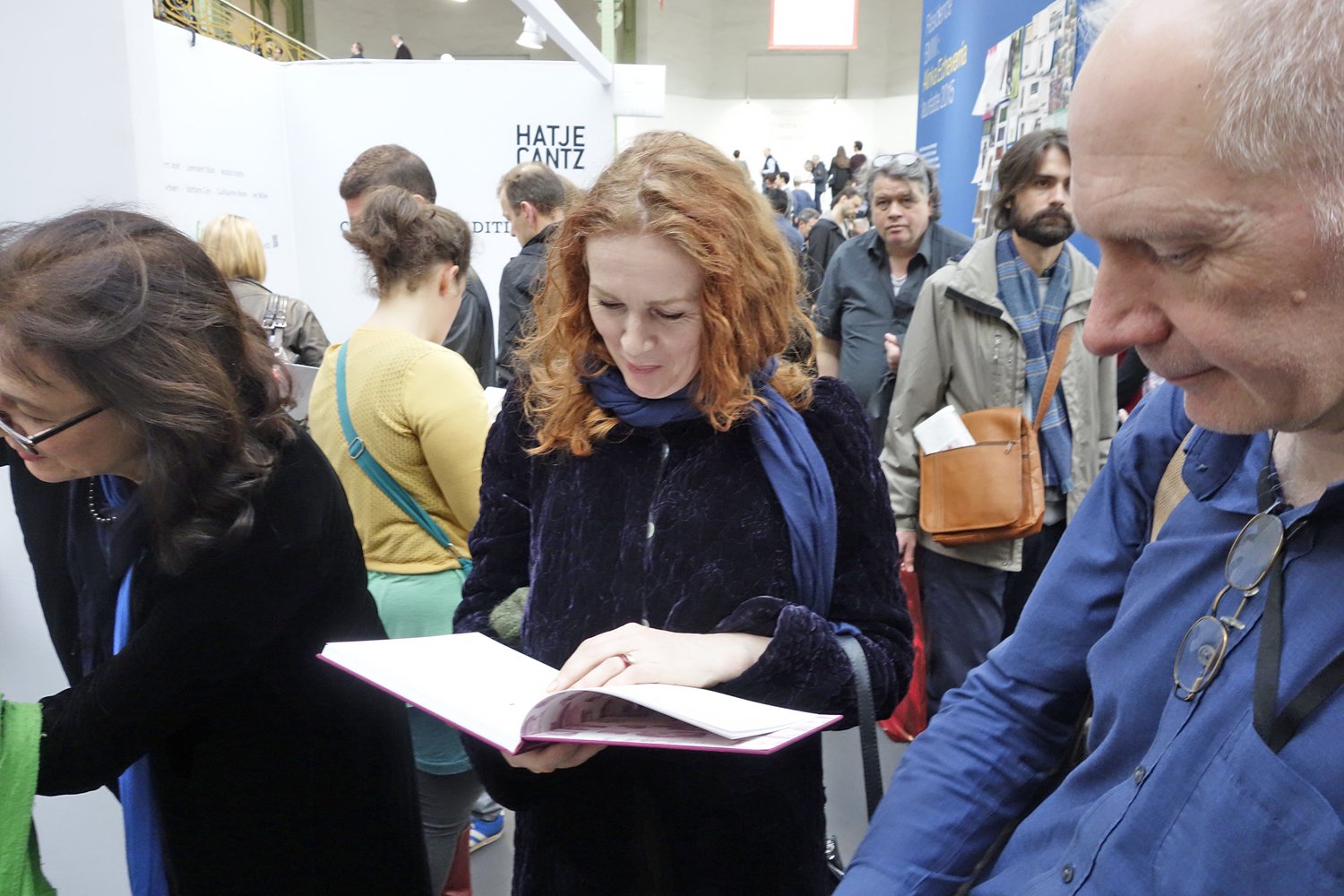
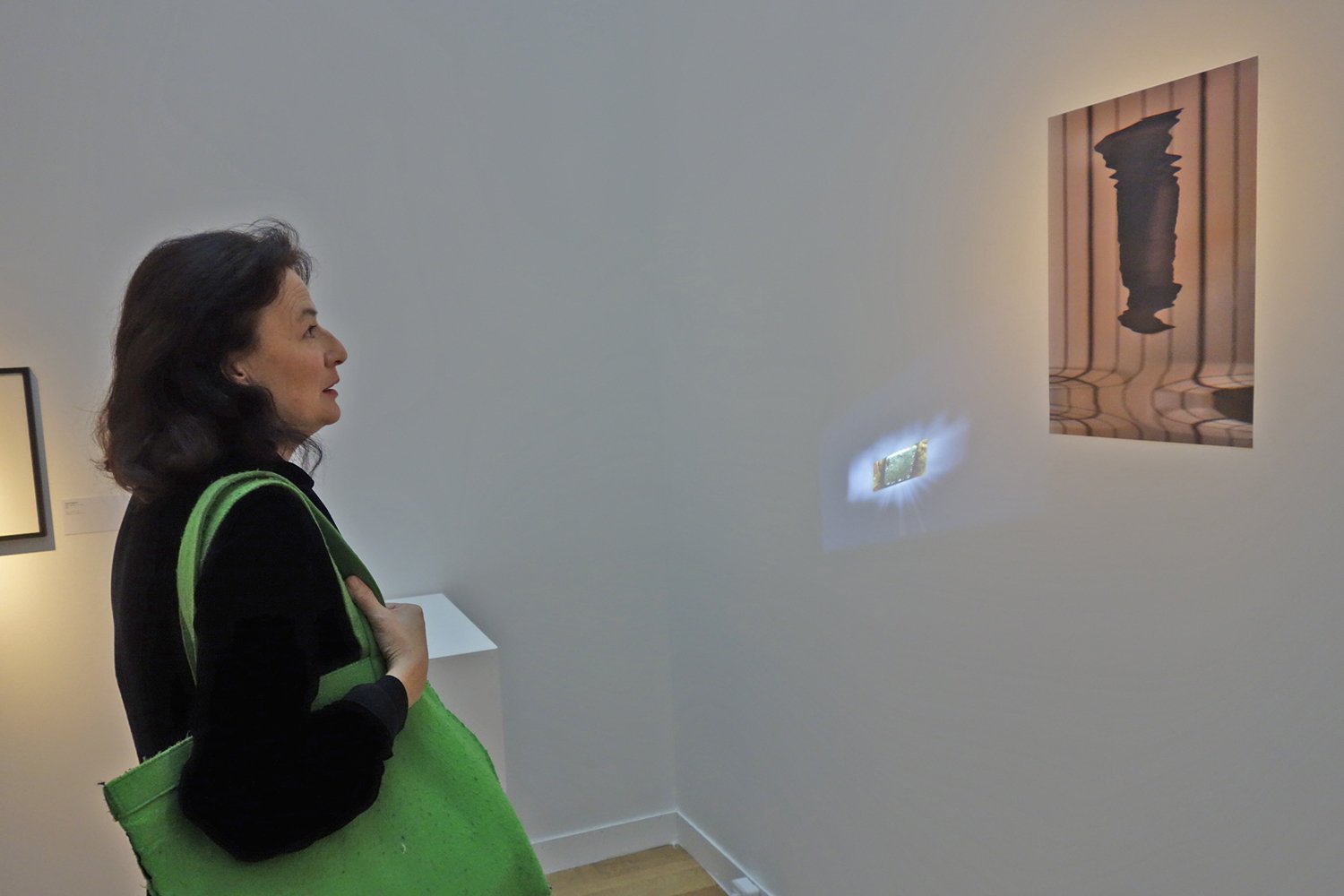
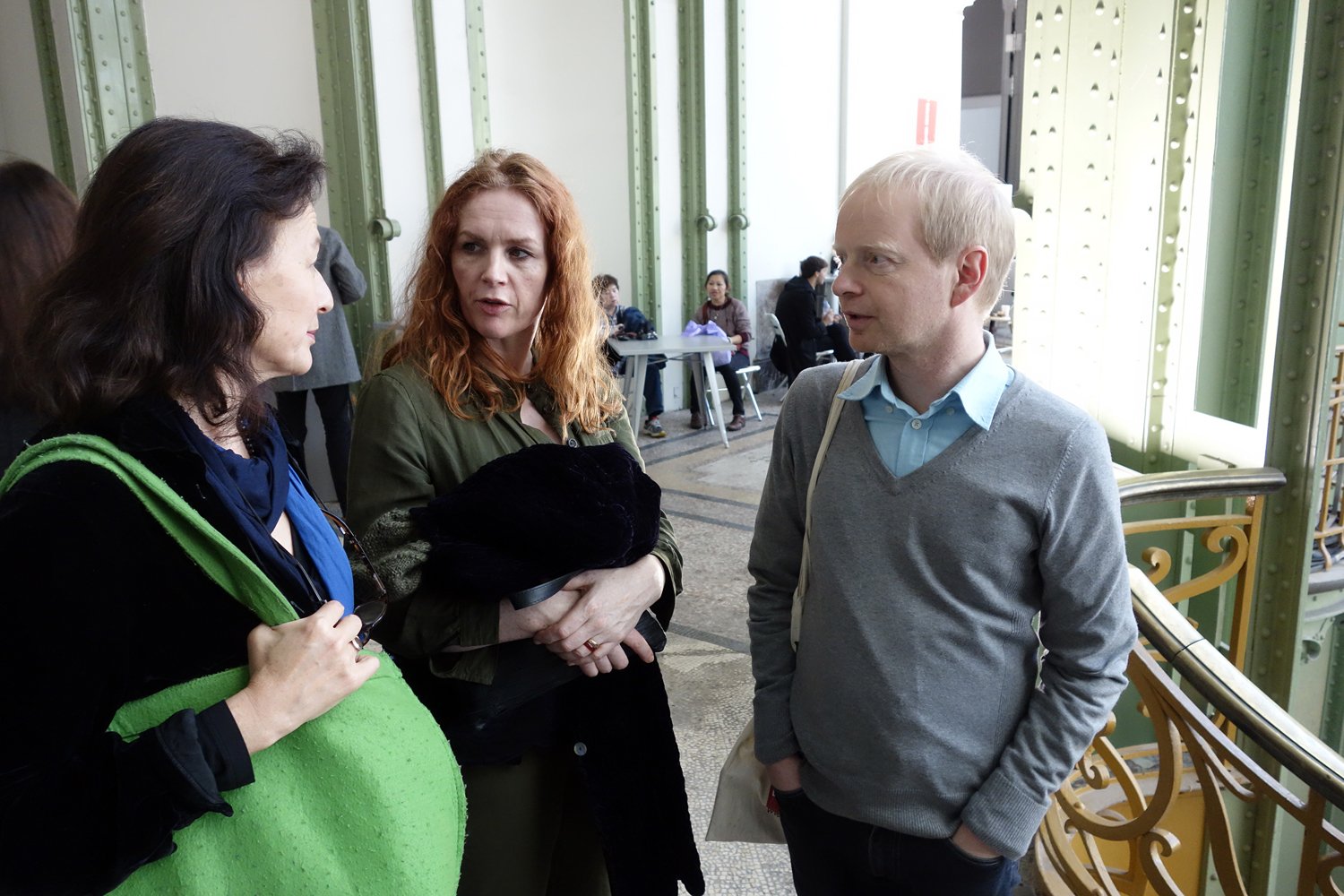
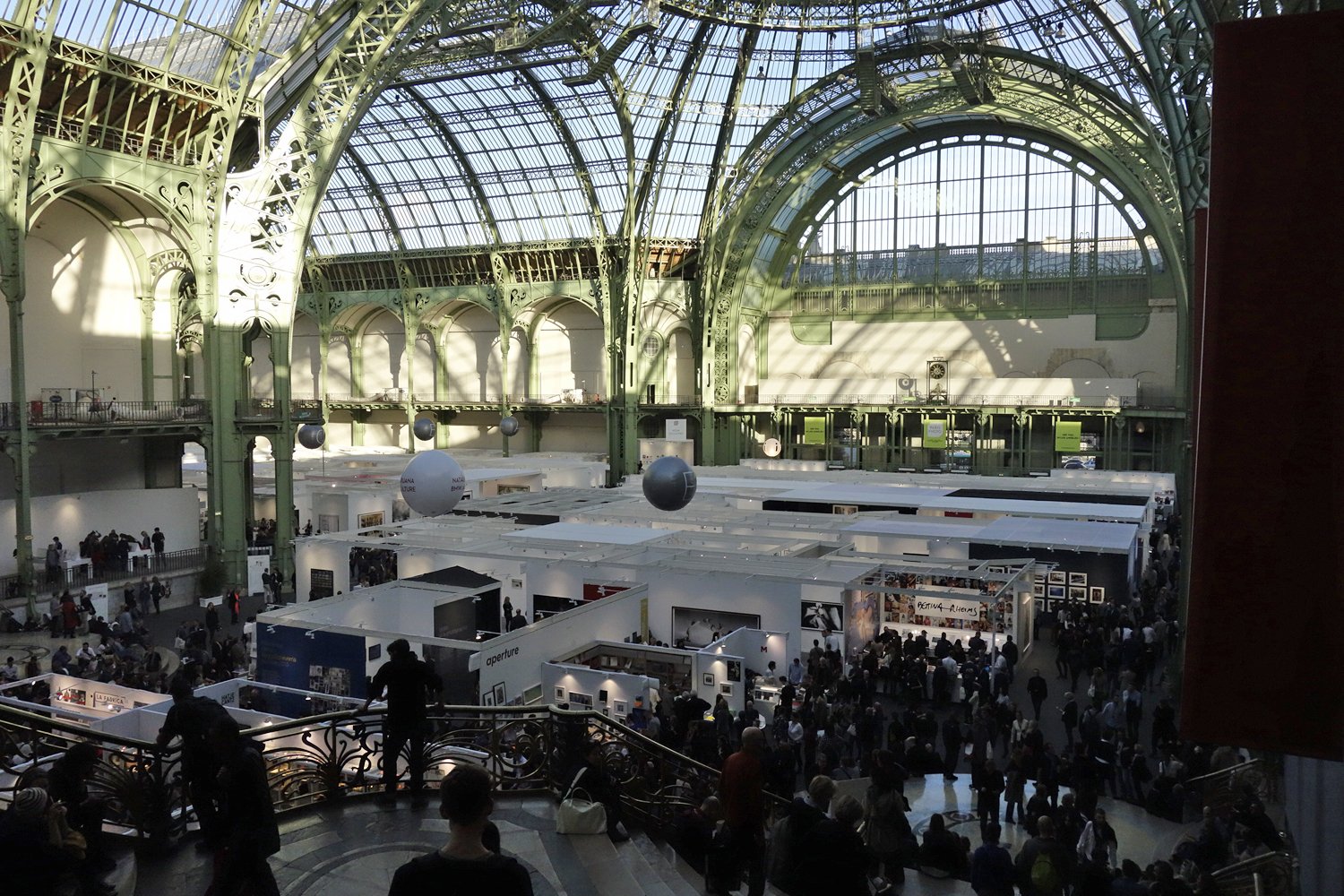

Paris Photo Fair 2015
For nearly two decades, the annual Paris Photo fair has punctuated the photography market’s year-end calendar by bringing together some of the top artists, galleries, collectors and professionals to the City of Light. The 2015 edition was no different: thousands of images and an exciting, stimulating week of presentations, discussions, signings and off-shoot programming.
As ever, the fair that year was underpinned by the invited galleries. 140, from 33 countries, were featured at the Grand Palais, presenting both historical and contemporary works. Joining them were 27 publishers and specialised art book dealers providing a complete panorama of the photographic medium.
As in previous years, the photo-book had a prominent place. In partnership with the Aperture Foundation, Paris Photo presented the 2015 Paris Photo-Aperture Foundation Photobook Awards. From just over 1,000 titles, the Awards presented a shortlist of 35 books. There was ultimately three winners in the following categories: “First PhotoBook,” “PhotoBook of the Year,” and “Photography Catalogue of the Year.”
For the first time that year, a selection of galleries presented large formats and serial works in a new curated exhibition sector in the Salon d’Honneur. The Salon d’Honneur also hosted guest collector Enea Righi, who presented major works from one of Italy’s most important private collections featuring prominent artists such as Cy Twombly, Nan Goldin, and Hans-Peter Feldmann, among others.
And, as usual, the Paris Photo Platform reunited key figures in the art world for a cycle of talks and discussions. That year’s program elaborated upon three axes specifically: the collection, photography after the crisis, and photography and its relation to the book.
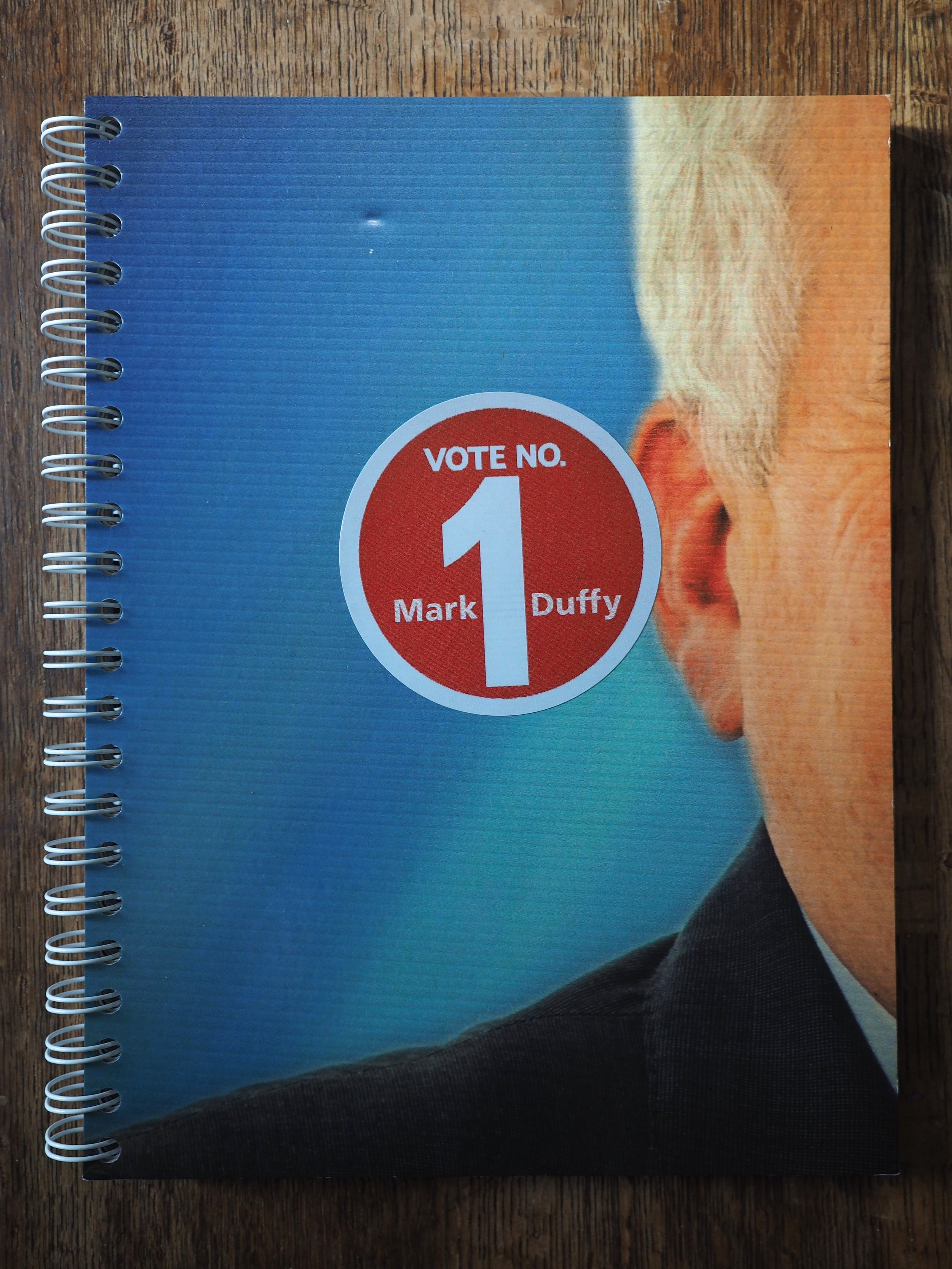
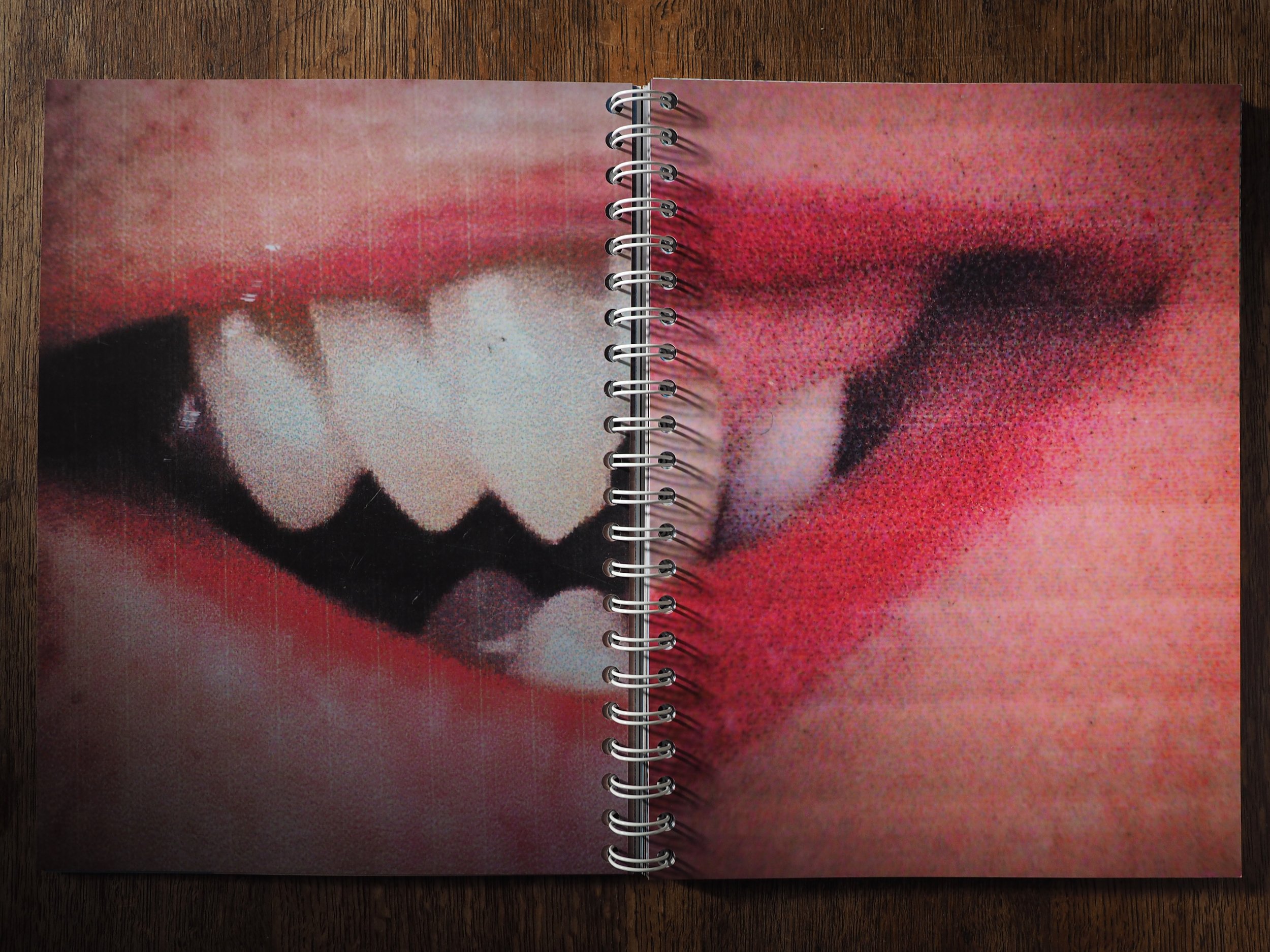
Mark Duffy Book Launch ‘Vote No. 1’
The Irish landscape was littered with electoral campaign advertising during the recent European, local and national by-elections. ‘Vote No. 1′ documents this and examines the culture of election advertising in Ireland. The series focuses on the accidental, and often gruesome, disfigurements the electoral candidates‘ faces suffer – an unintended consequence of their posters‘ erection. These images reflect the Irish electorate’s increasing disillusionment with the political process after years of harshening austerity politics.
‘Vote No.1' was awarded 1st Prize at the Vienna Photobook Festival in 2015, shortlisted for the Bourse du Talent 58 Portrait in Paris, France and the Luma Recontres Book Award d'Arles, France 2015.
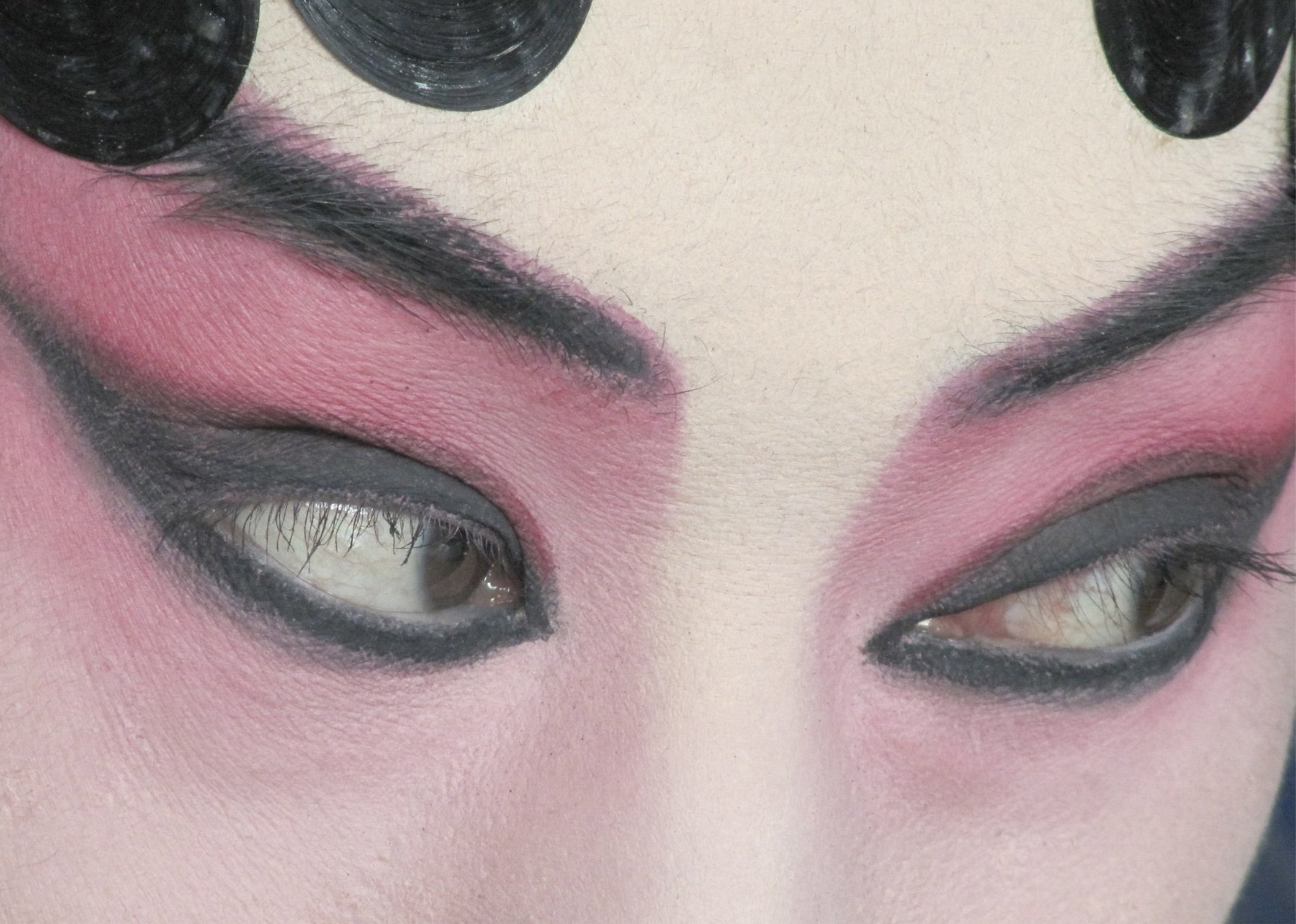
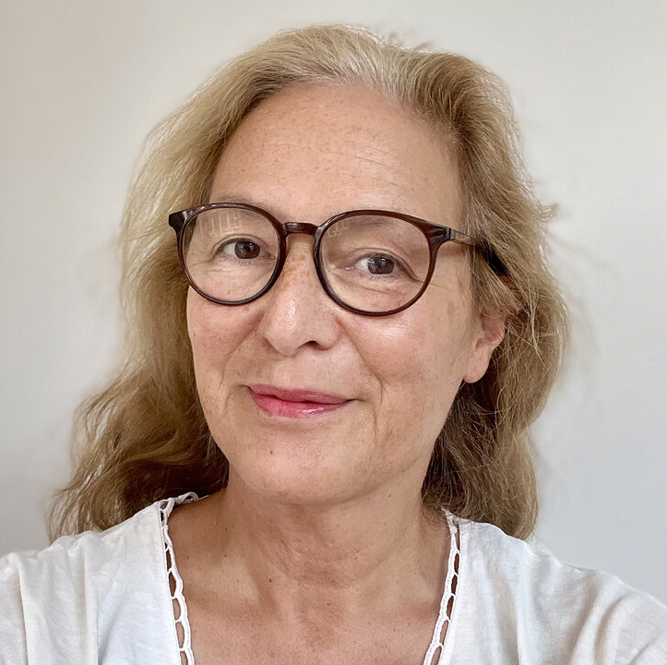
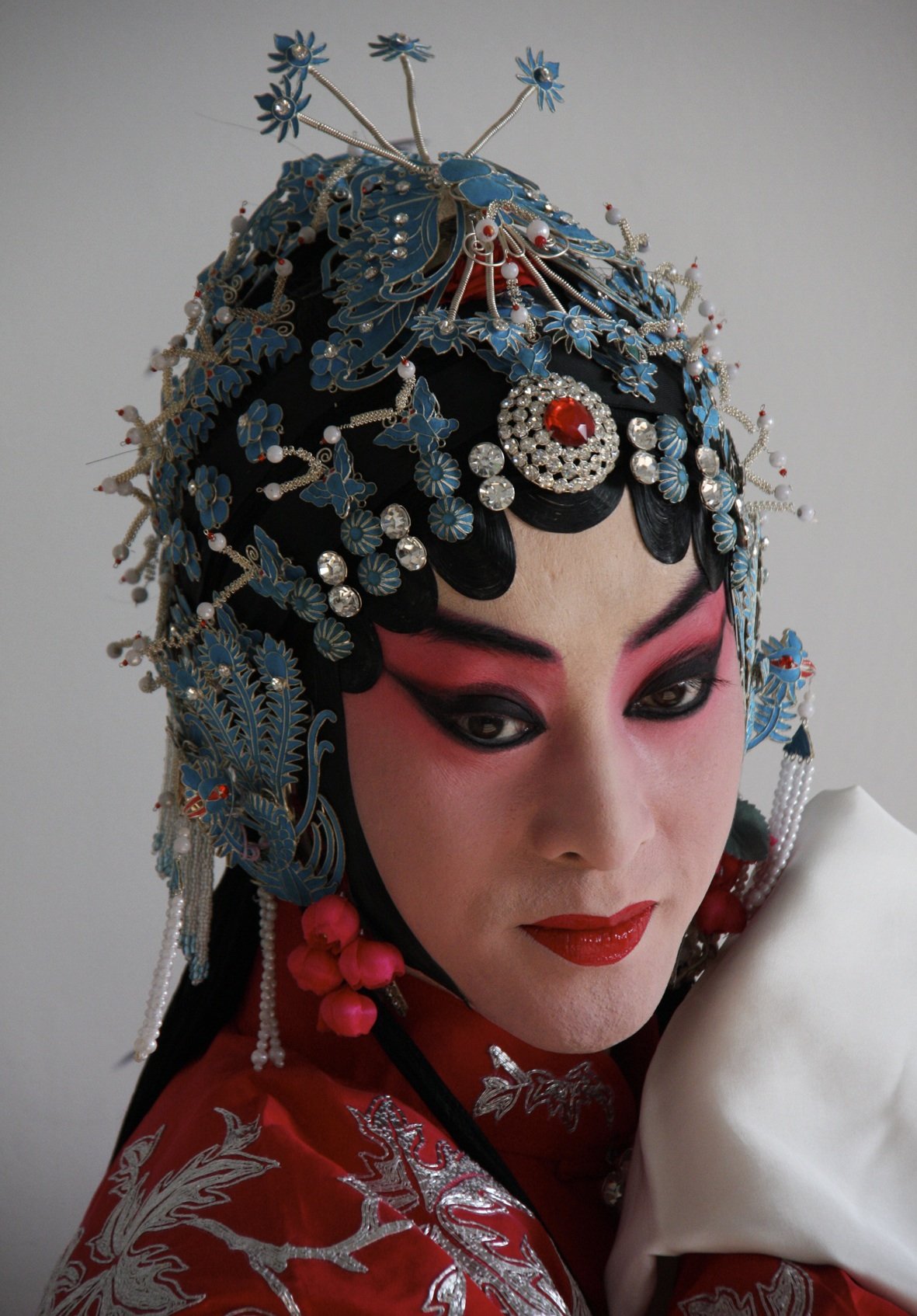
The Changjiang Photo & Video Biennale
(Chongqing, China)
Inaugural edition
April 26 – July 26 2015
Chongqing - China’s largest and fastest-growing megapolis – is developing its international arts offering with a new contemporary photo and video biennale.
Gallery of Photography curator Tanya Kiang was invited to participate. “China’s art scene is now leading the world, and the Changjiang Photo & Video Biennale is a major initiative in the international contemporary art calendar. The focus on photography will underline Chongqing’s role as a dynamic new force in China’s burgeoning art scene”, she says. Alongside other international curators, Kiang took part in a major Symposium as well as judging the exhibited works. The first prize was 150,000RMB (approx €22,500), and there were five other substantial awards.
Approximately 100 top international artists were selected and showed their work in the newly-opened Changjiang Museum of Contemporary Art. In this select group was Russian/Irish artist Varvara Shavrova. Shavrova, who divides her time between Dublin, Mayo, London and Berlin, was exhibiting her major video installation, ‘The Opera’. This spellbinding exploration of gender in traditional Peking opera premiered in the Gallery of Photography Ireland in 2012.
Under the overall direction of three international curators, Francois Hebel (FR), Alejandro Castellote (ES) and Wang Qingsong (CN), the Changjiang Photo & Video Biennale explored the theme of “Real/Unreal”. It questioned whether photography and video can accurately document the past and interpret contemporary reality during these times of global transformation.
Gallery information
Opening hours
Open 6 days:
Tuesday - Saturday, 11am - 5pm
Open Mondays by appointment for ongoing education, artists archiving and training.
Closed Sundays
Closed for bank holidays and public holidays
Admission is free
Find us
Gallery of Photography Ireland
Meeting House Square,
Temple Bar,
Dublin D02 X406, Ireland


